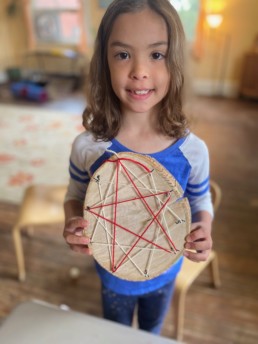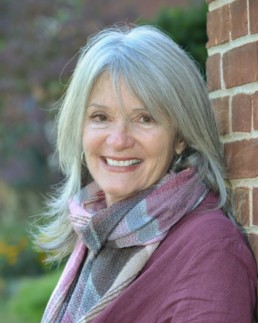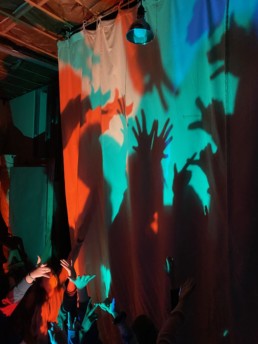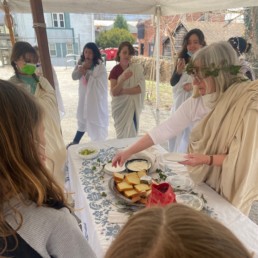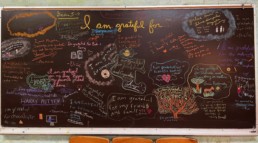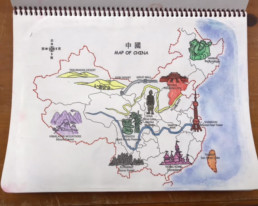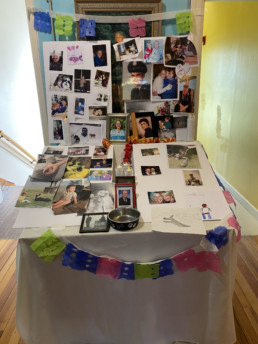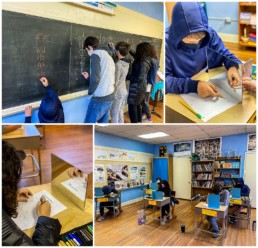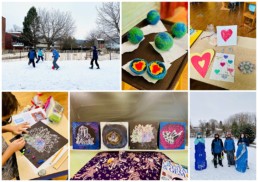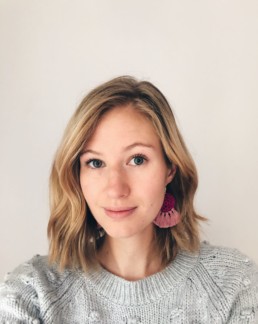Times Tables with Class 2
Written by class 2 teacher, Mandela Davis.
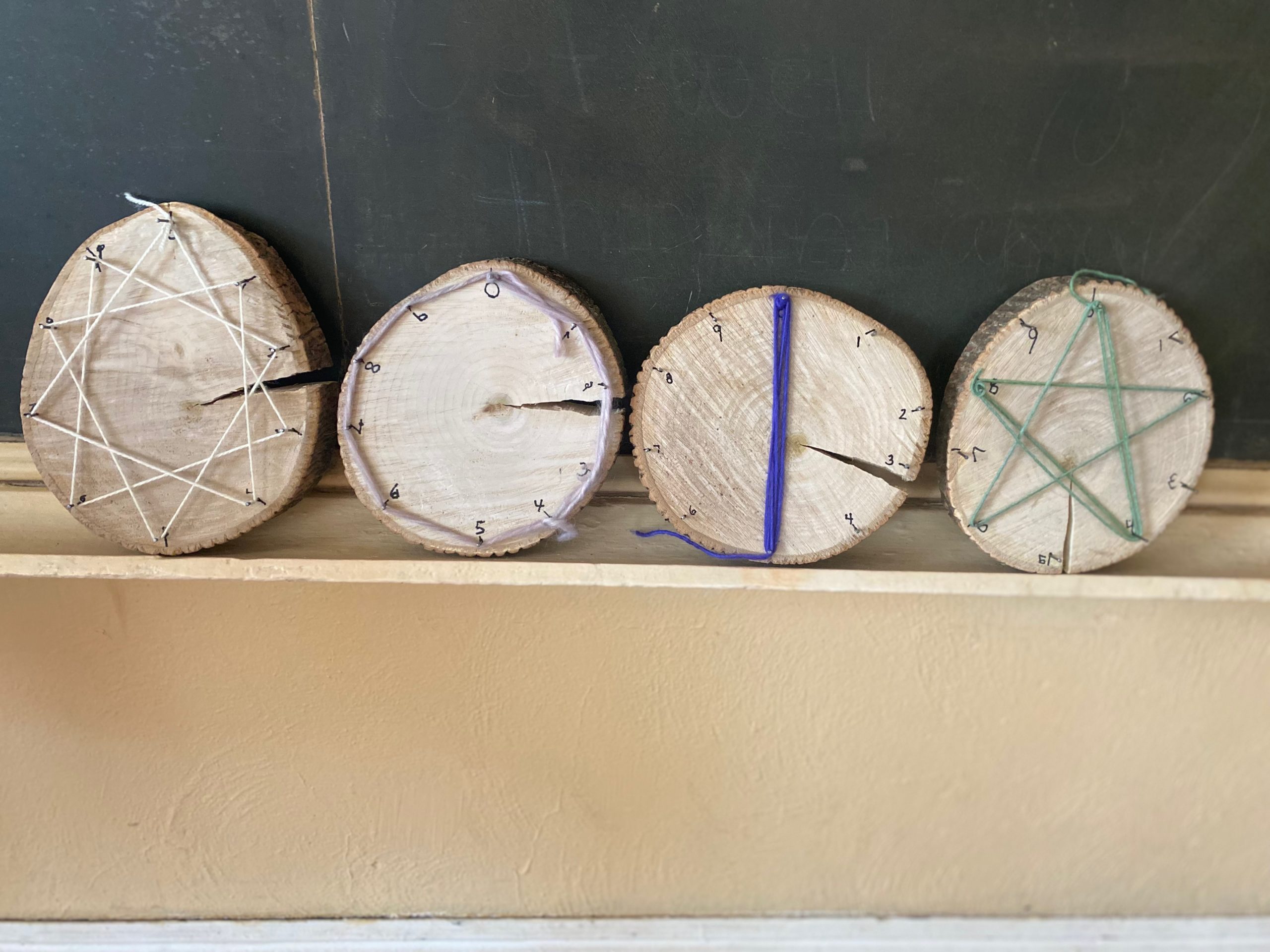

Here at Susquehanna Waldorf School, and many Waldorf schools around the world, we believe that learning should be fun, creative, and inspiring. Second grade is a very exciting year when it comes to math. In the fall, students review what they learned in first grade and build from there. Second grade students dive deeper into learning all about multiplication and learning the times tables.
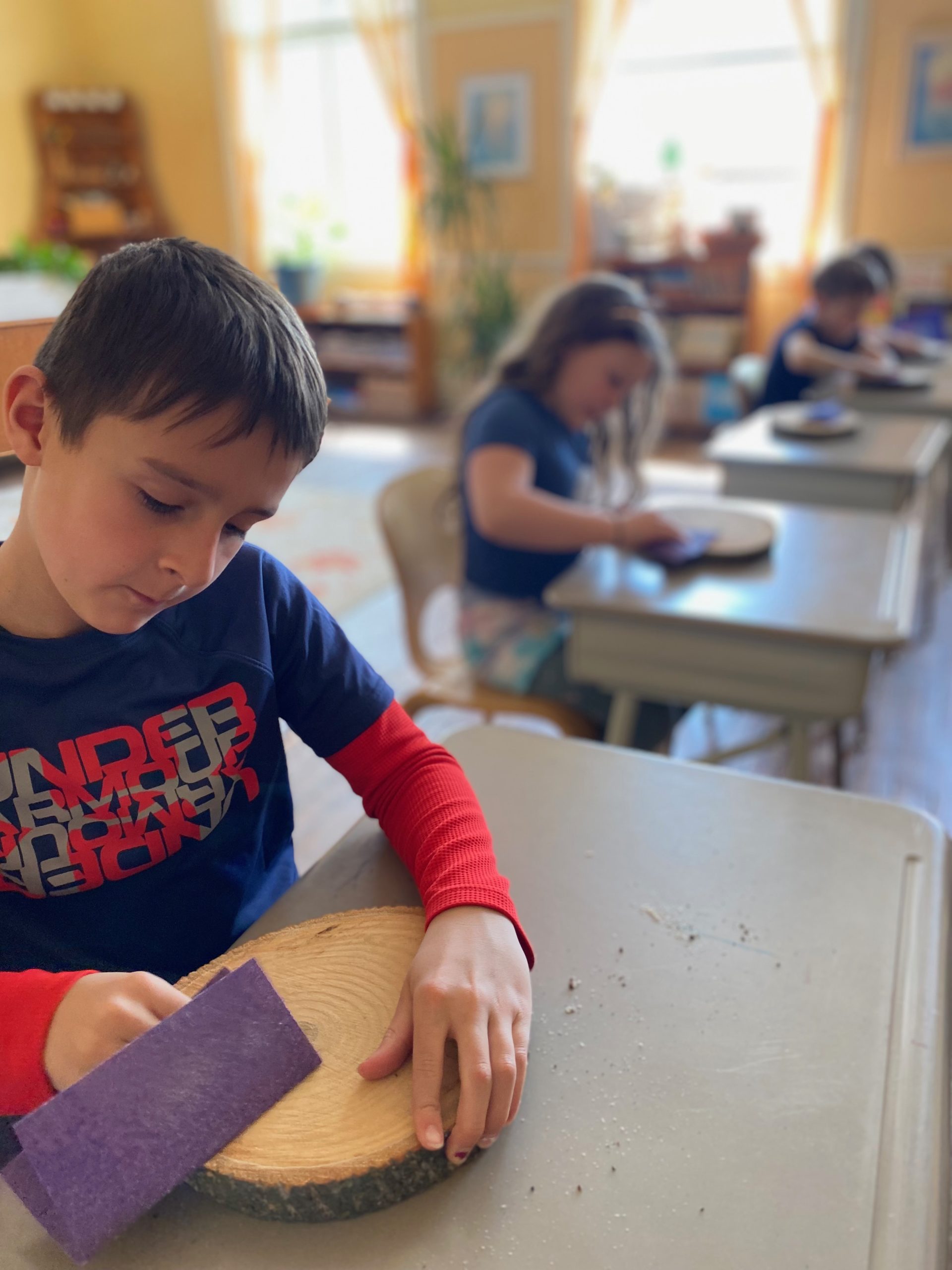

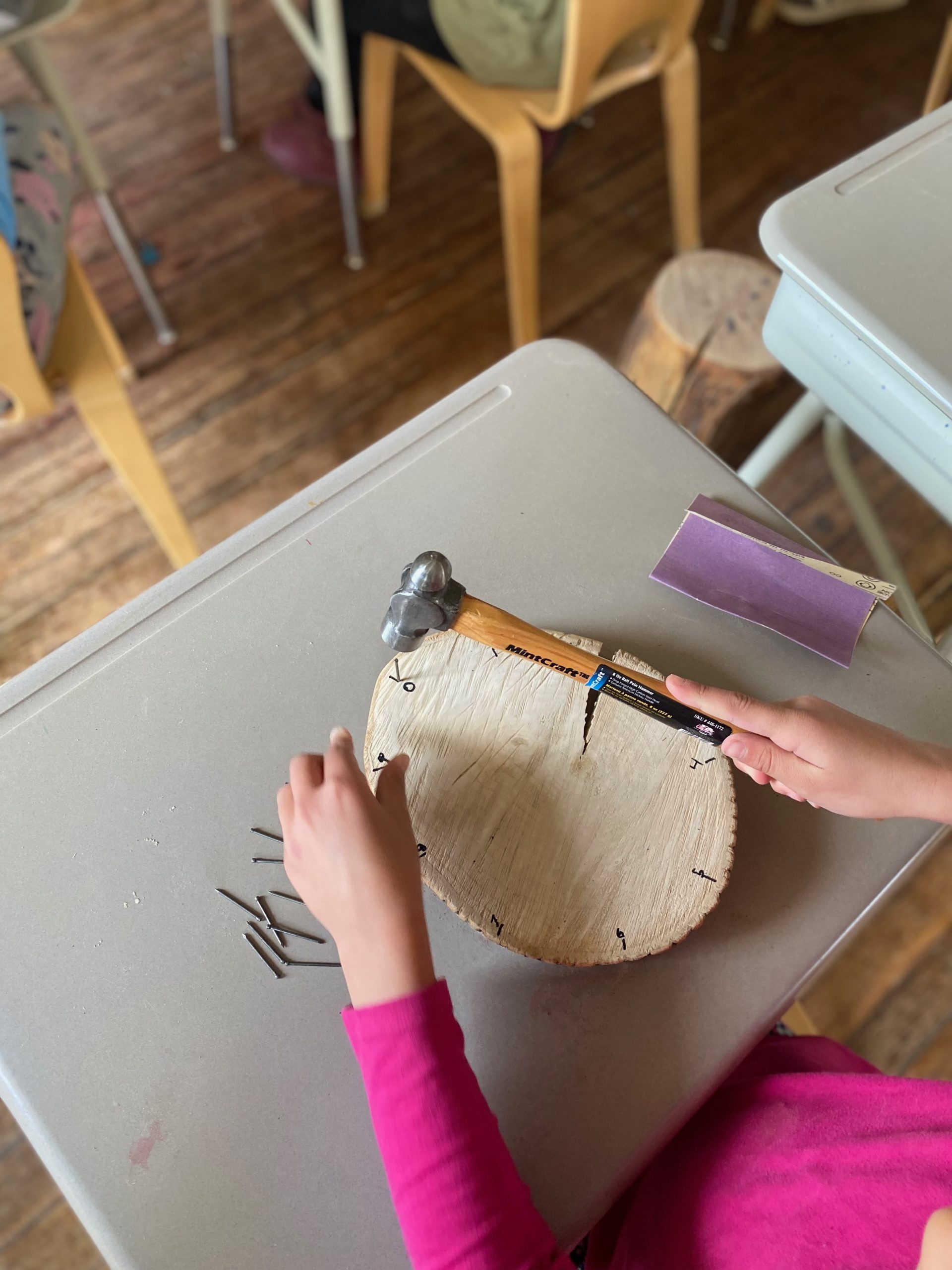

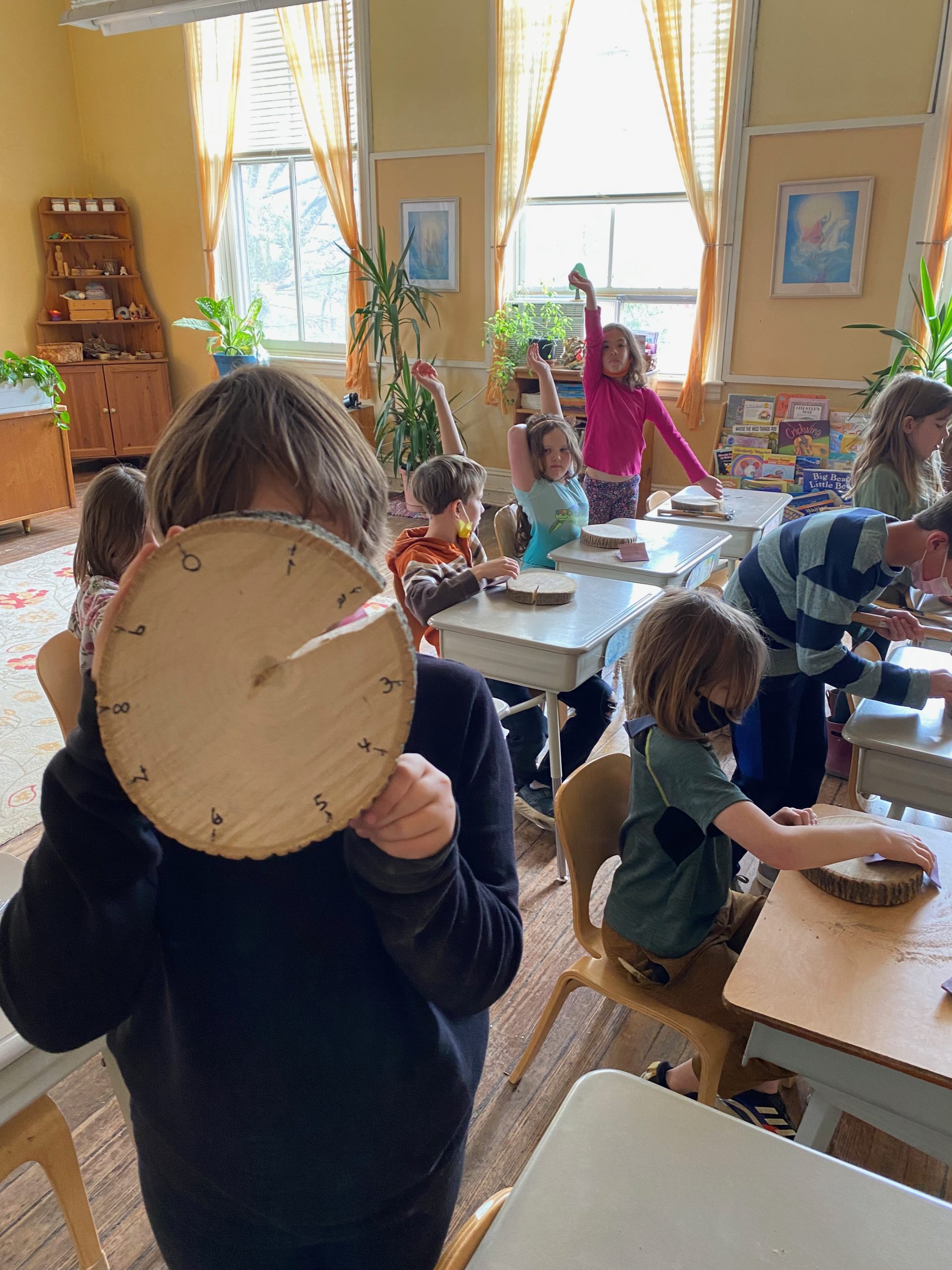

The times tables are taught through songs, movement, and imagery. One unique way of teaching this is through the magical times table circle. The teacher draws a circle on the chalkboard, writes the number 0 on the top of the circle and 5 at the bottom, and the fills in the numbers 1 through 9 in a clockwise direction. The teacher then starts at 0 and connects a line to numbers 2, 4, 6, 8 and then back to 0 to represent the number 10. Children and teacher look at the shape of a house in the circle, which emerges from the two times tables. Not only are the children seeing the pattern of numbers, they are also seeing the shape this particular times table creates. The teacher goes through each times table number doing this.
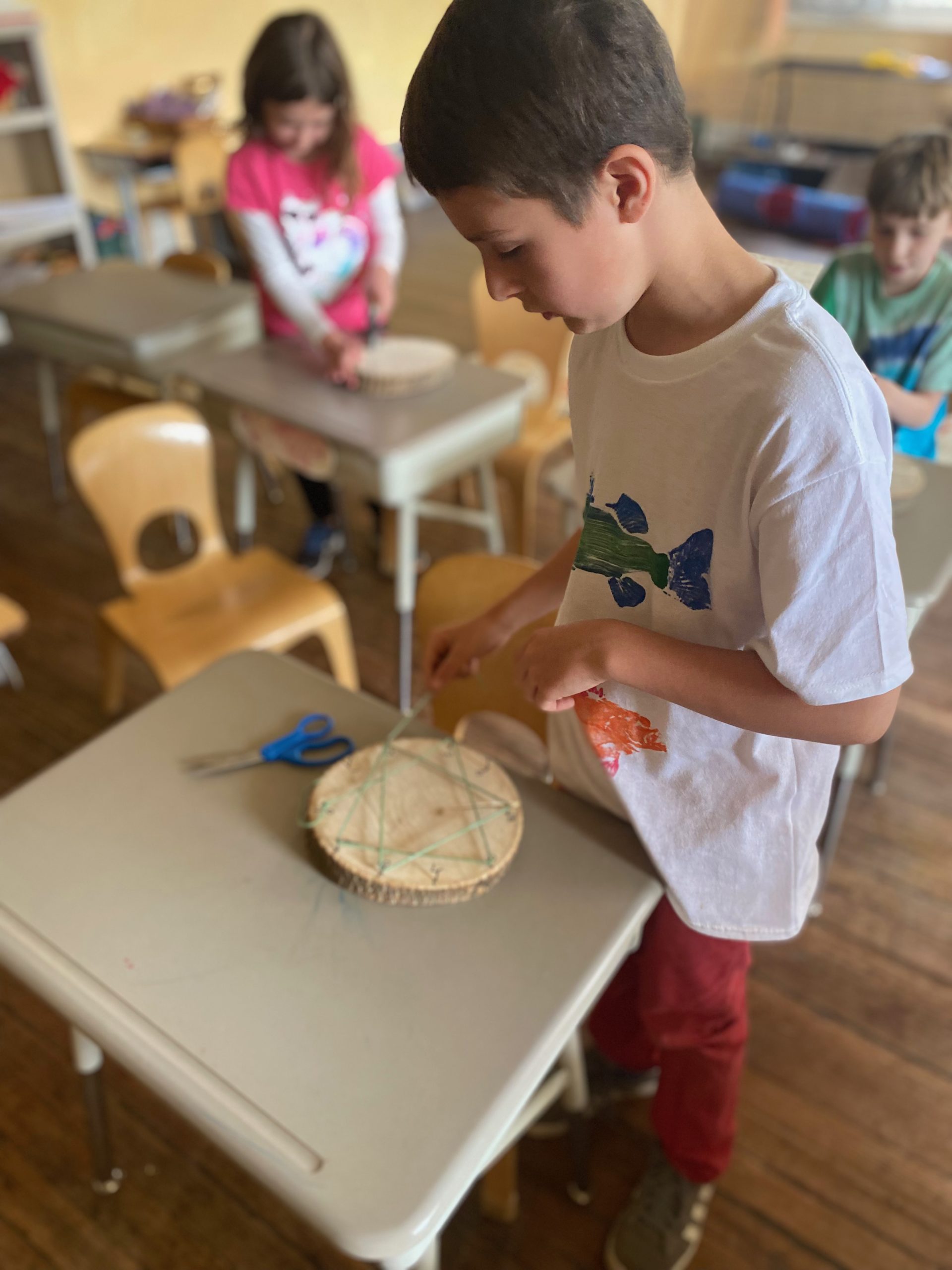

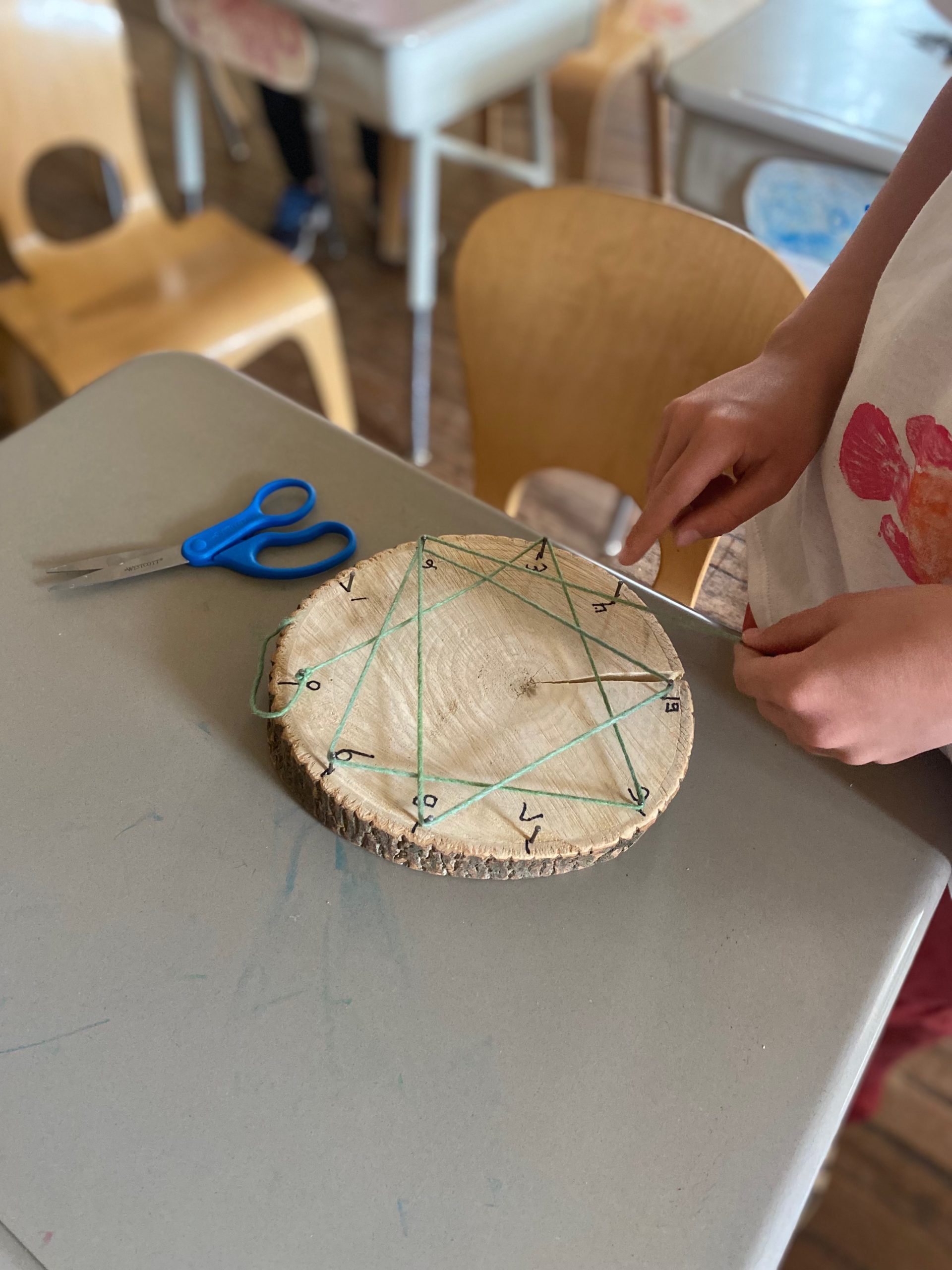

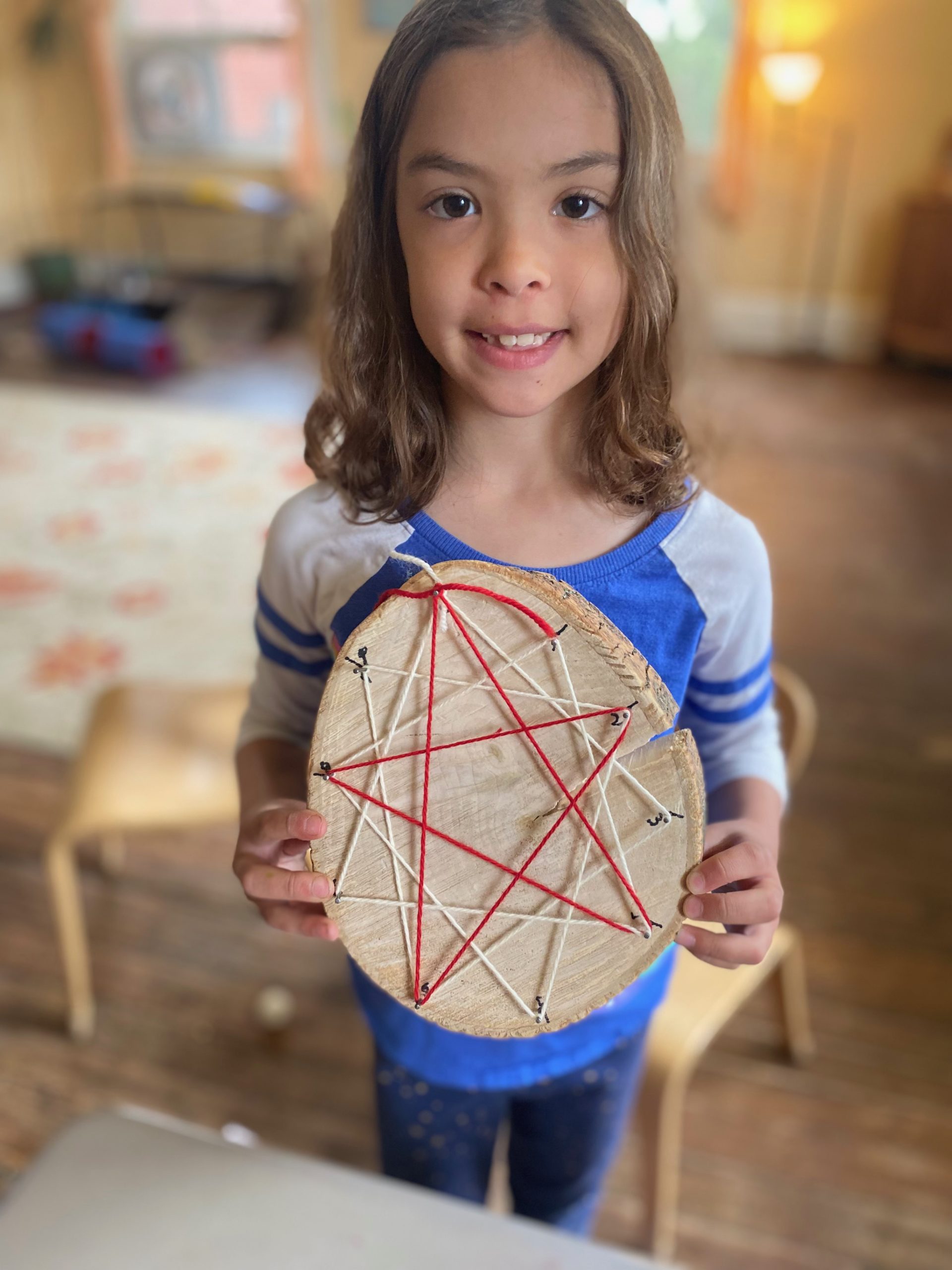

After teaching the students the magical times table circles, the children made their own wooden times table circles this spring. Each student got a round piece of wood, sand paper, 10 nails, hammer and a variety of colors of string that represented different times tables. The children worked on this project in math skill lessons in the month of April. Each child then got to take them home. My hope is that through song, stories, and the magical times table circle project, students will find a deeper meaning and understanding of multiplication. A deeper understanding and love that will carry them on to the older grades and higher math levels.
35th Anniversary Spotlight: SWS's First Teacher
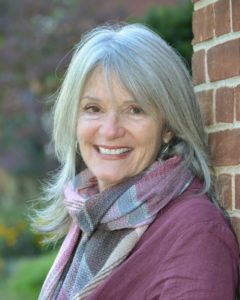

We are celebrating 35 years of Susquehanna Waldorf School this year! In honor of our 35th anniversary, we're interviewing members of our community to share why they love SWS. We're kicking off this series with SWS's first teacher, Miss Linda.
On how she became the first teacher…
I was here for 31 years as the kindergarten, parent/child and nursery teacher. I was the first teacher and it happened by accident. Another woman who was trained in Waldorf education backed out in August and, because I had a degree in early childhood education and I was going to assist her, all eyes turned to me. “You’re doing it, right?” Gulp, okay. Dorothea and Hal Williams were my mentors. He was an anthroposophical doctor based in Lancaster and Dorothea was a handwork teacher. Williams Hall and Dorothea’s Garden are named after them.
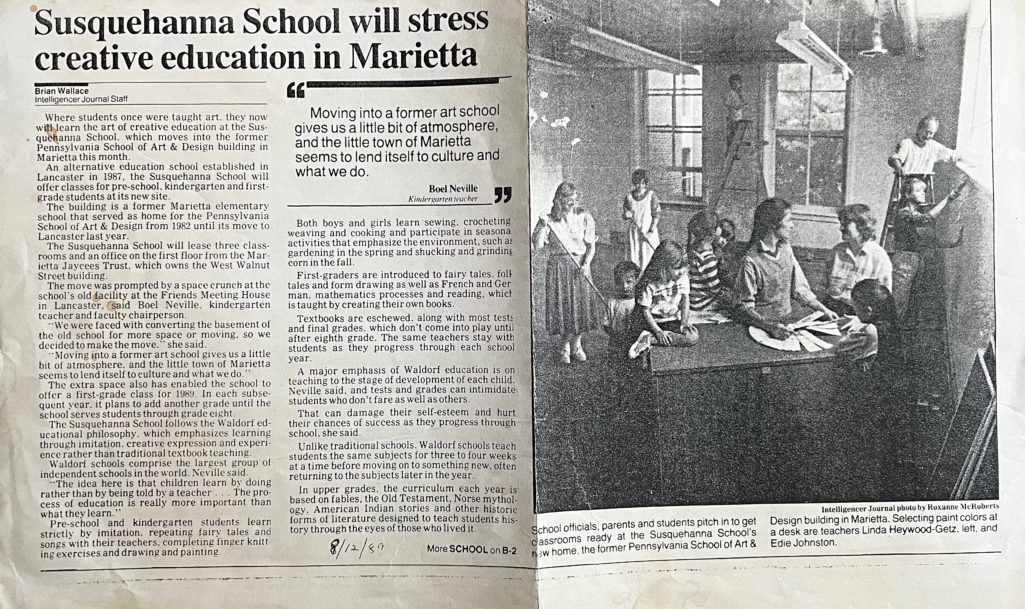

What were the early days at the school like?
We started at the Friends Meeting house in Lancaster. It was so kind of them to offer their space. I didn’t know much about Waldorf education at the time except that it hit me right in my heart. I knew I wanted it for my children. It was a very loving, heart-centered community.
Two years later, we had outgrown what they could do for us, we needed more space, and we moved to our current location. Coming here was a leap of faith. We kept growing. We gradually took room after room after room and ended up buying the building. We all pitched in and painted rooms. People made tables (we had a lot of woodworkers as part of our community). Some of the tables are still actually here. I always told the children, "I want the old tables. They have the stories." The stories are in the tables. That’s the history of the school right there.
We’re in an old building. In Waldorf education we talk about the being of the school and it felt like the being of the school shook hands with the building and agreed to do this. We had our ups and downs over the years but the school has always been such a light in the community.
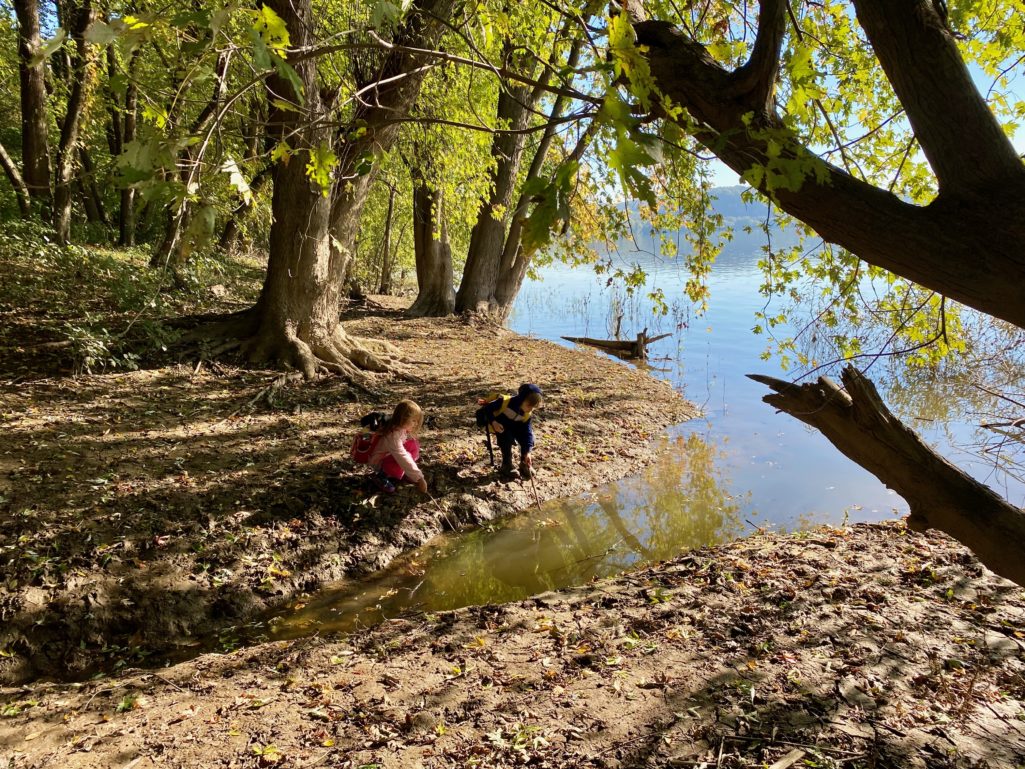

On the Susquehanna River…
The river called us to this place. As a kindergarten teacher the river was a place to go that had heaven and earth right there. All the elements were there: earth, water, sky. The children loved it. We would explore. This was before the rail trail was there and it was totally wild. We would bring bags and pick up junk. There’s such a calling to the river. It’s hard to put into words.
The river’s big. It’s moving. It’s alive. The Susquehanna River is the very picture of life passing: it’s full of possibilities, it catches the light. It really is a metaphor for what a school could be. A lot of it is in your way of imagining what the school was and what it could be.
I think that as the years went by and the rail trail was established, more of a relationship for the children developed. A lot of times it was in the teachers' or administrators' minds. But once all the classes found it as a place to go and relate to, it grew out of that. At the end of my teaching, we’d go down to the river every day. We’d say good morning to the river. “Good morning river!” We’d stand at the banks and salute the river. “Thank you river, goodbye river!” It’s hard to imagine the school anywhere else, to me.
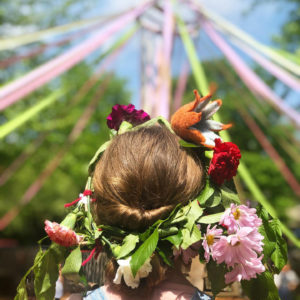

Favorite Memories…
I’ll cry. What I love so much about the school is the rhythm of the year. I can’t even say there’s one May Day that stands out. It was this collective sense of May is coming. We got a Maypole, we learned May Day songs, we made wreaths and we brought flowers. All of the festivals really spoke to what we were about and the beauty of being alive. The Advent Garden/Spiral. So many recollections of that, telling the story, sitting in the center, getting the greens. It was all so coherent. From my point of view as an early childhood teacher, the children sensed a coherency of the year and of being alive; to living and working to make the place beautiful and reflecting the fact that the world is good.
I’ve met so many amazing people in these walls. Collectively there are so many amazing people that have come here. Because it’s different, because it’s alternative, people who came to check out the school were conductors, filmmakers, national level hockey players, the whole gamut of individuals who were curious about us. Those who found a home here brought all those talents as well. The community creates the school and as a teacher, the number one thing I’m trying to teach the children is community and how we work together.
Another memory I have is that a partner of mine died of brain cancer while I was here and that tree (points out window) was planted right there in his honor and it was just a little tree at the time. When I come here, the memories of my life are here. Dorothea’s garden at the back of the school used to be paved. There was a straight cement path of sidewalk and a chain link fence. We thought, “how can we change this?” We jackhammered it up. The playground was a parking lot when we got here. There was nothing, just a big parking lot.
I’ve watched things emerge here. Children emerging into who they are is the same as watching the school emerge. The school became more and more what it is through those of us who saw what it could be.
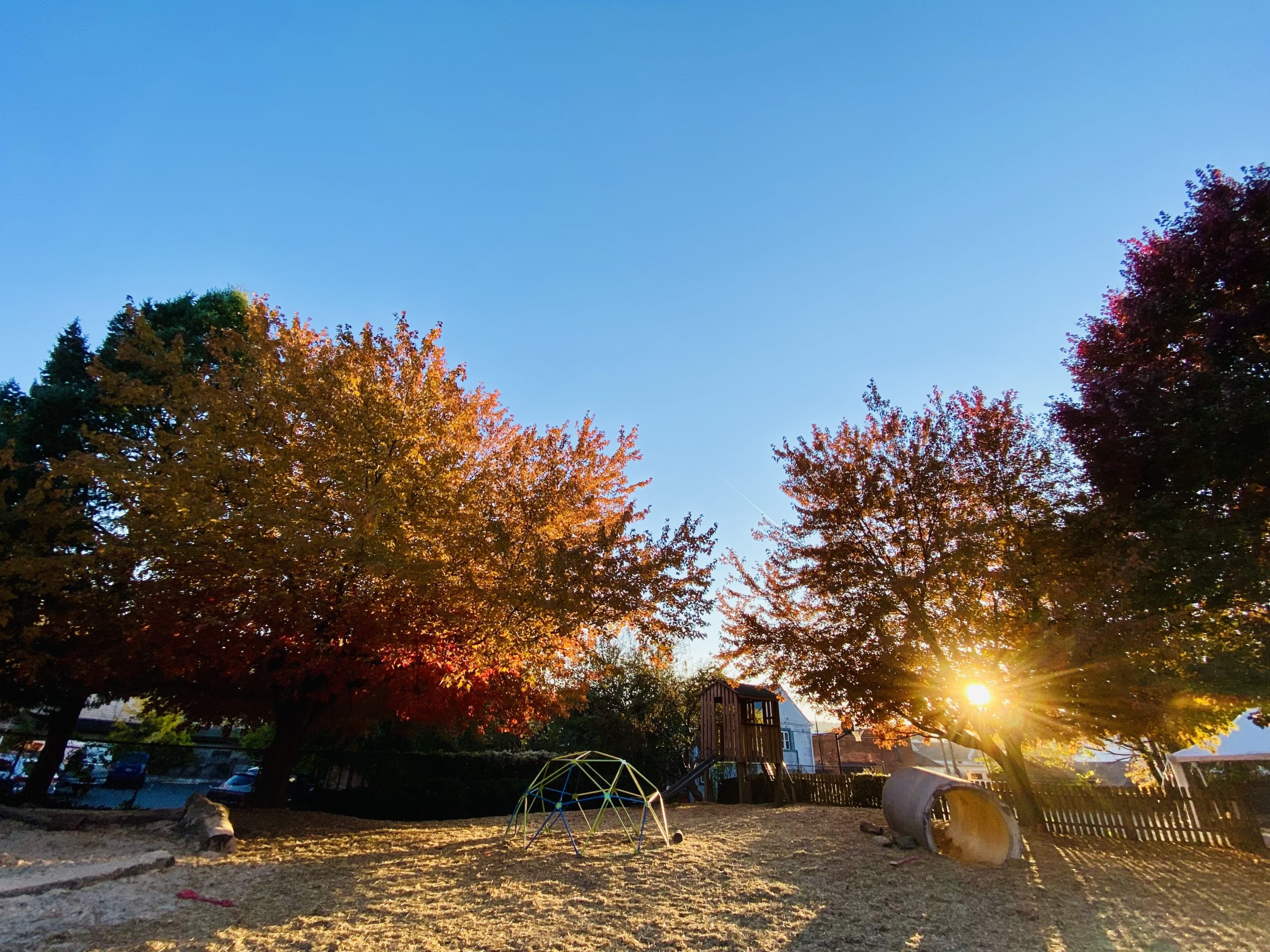

Final Thoughts…
Working here has been the greatest gift. People have worked so hard for an idealistic sense of how we can better be with one another. We had all of these different rules over the years, how to communicate with each other, we explored conflict resolution. There’s so much earnest striving. There’s a verse by Steiner, earnest heartfelt striving. That was here all of the time and I think in all Waldorf schools. That’s at the heart of it. Striving for something better for the world via the children and what they can do.
What’s happened here has already changed the world. It happened from the very beginning, it made a difference. There’s so much love here. The teachers for their kids. There’s so much love here. And love is what changes everything. You need to be sharp-sighted and intelligent and set boundaries and love and commit fearlessly.
I’m so appreciative. I couldn’t ask a better way to spend 30 years of my life. I can’t imagine it any better than the way it’s been here. I feel so grateful. I walked away with a greatly expanded heart. And it has nothing to do with me, it’s the community.
6th Grade Physics
Written by 6th grade teacher, Rochelle Dietz.
In 6th Grade, Physics is brought/taught through observation (observing phenomena) and hands-on experiences/experiments. Just as we've approached all of our learning, the goal is to cultivate an attitude of awe, so that they may truly see and experience the marvels around us. This is not done through what some Waldorf educators call "edu-tainment", but through observing phenomena (a phenomenological approach). Over the course of a 4-week block of study, 6th graders explored the sources of Sound, Light, Heat, Magnetism and Electricity.
With the exploration of sound, we learned about the larynx. According to Rudolf Steiner you can “bring acoustics into relation with musical science when you describe the human larynx physically and physiologically” (as cited in Trostli, 2016) After this description, we compared human sounds with other types of sounds. We explored how sounds are created , pitch and volume and how sound travels.
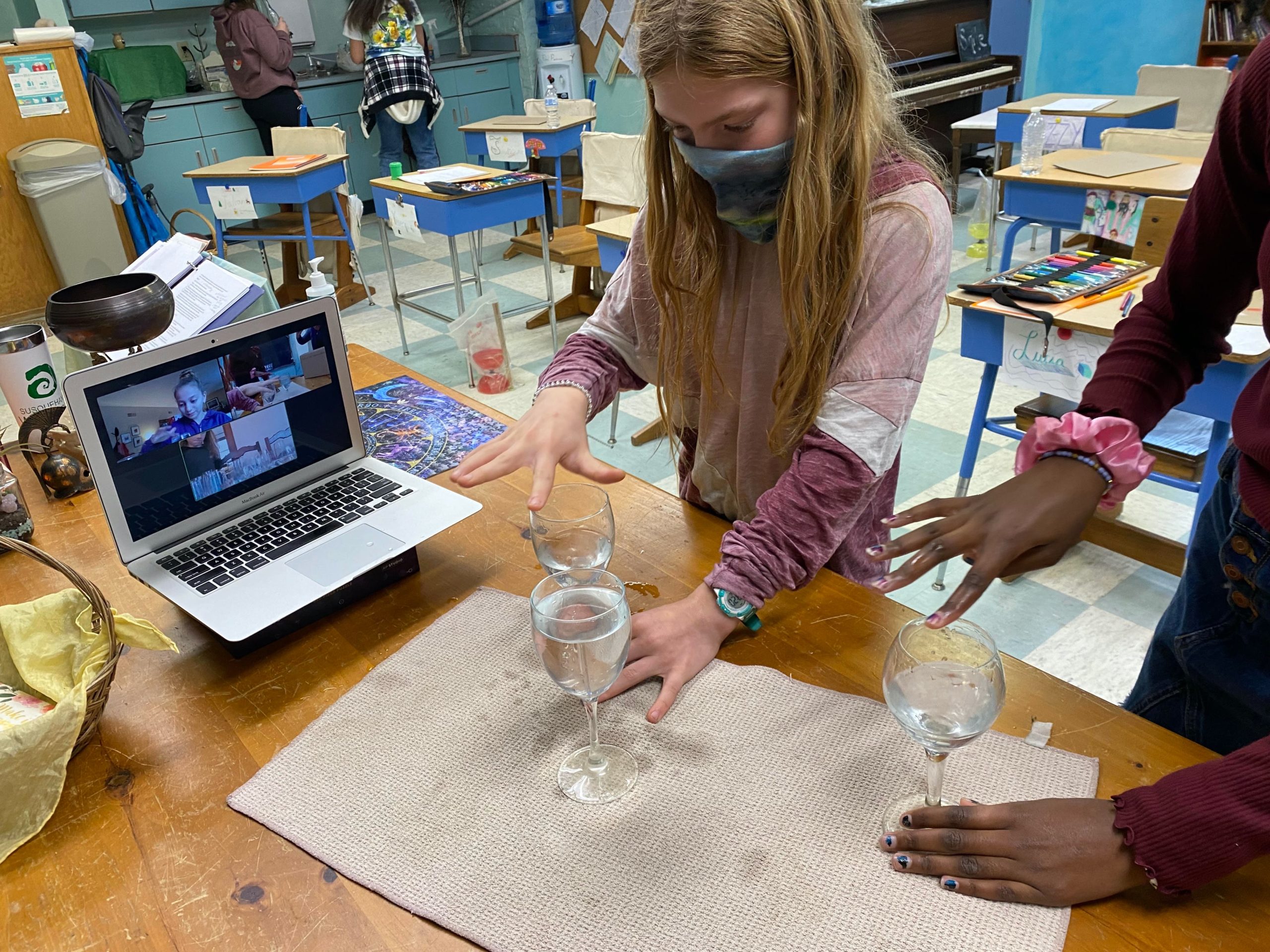

This exploration of sound ended with a very exciting demonstration, sort of a mystery called the Chladni plate, where the students could “see” the effects of sound that are made visible through the changing geometric forms engendered by sounds.
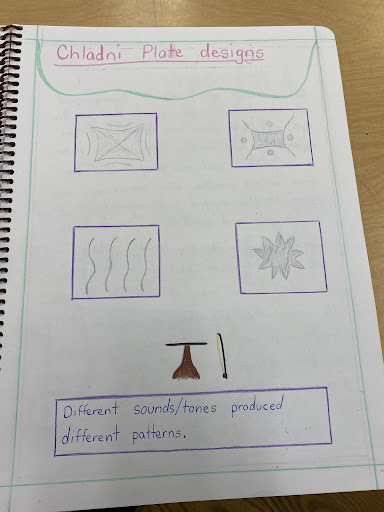

The study of light was up next and we started with the experience of complete darkness, which happened on our stage. With all the curtains closed around us and every patch where light could possibly enter covered with cloth, the students sat in a circle and the lights were turned off. Once they sat in this darkness for some time, a small candle was lit and the flame observed and experienced. A reflection on their experience came later through beautiful poetry and illustrations.
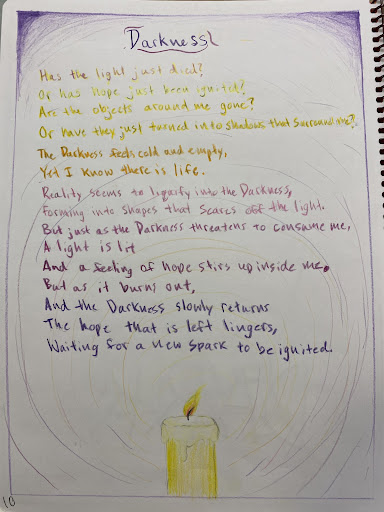

An exploration of light and darkness followed and much of our time was dedicated to the experience and study of color, which included the generation of color, afterimages and colored shadows.
Exploring the colors of light was definitely illuminating as they discovered the primary colors of light are different!
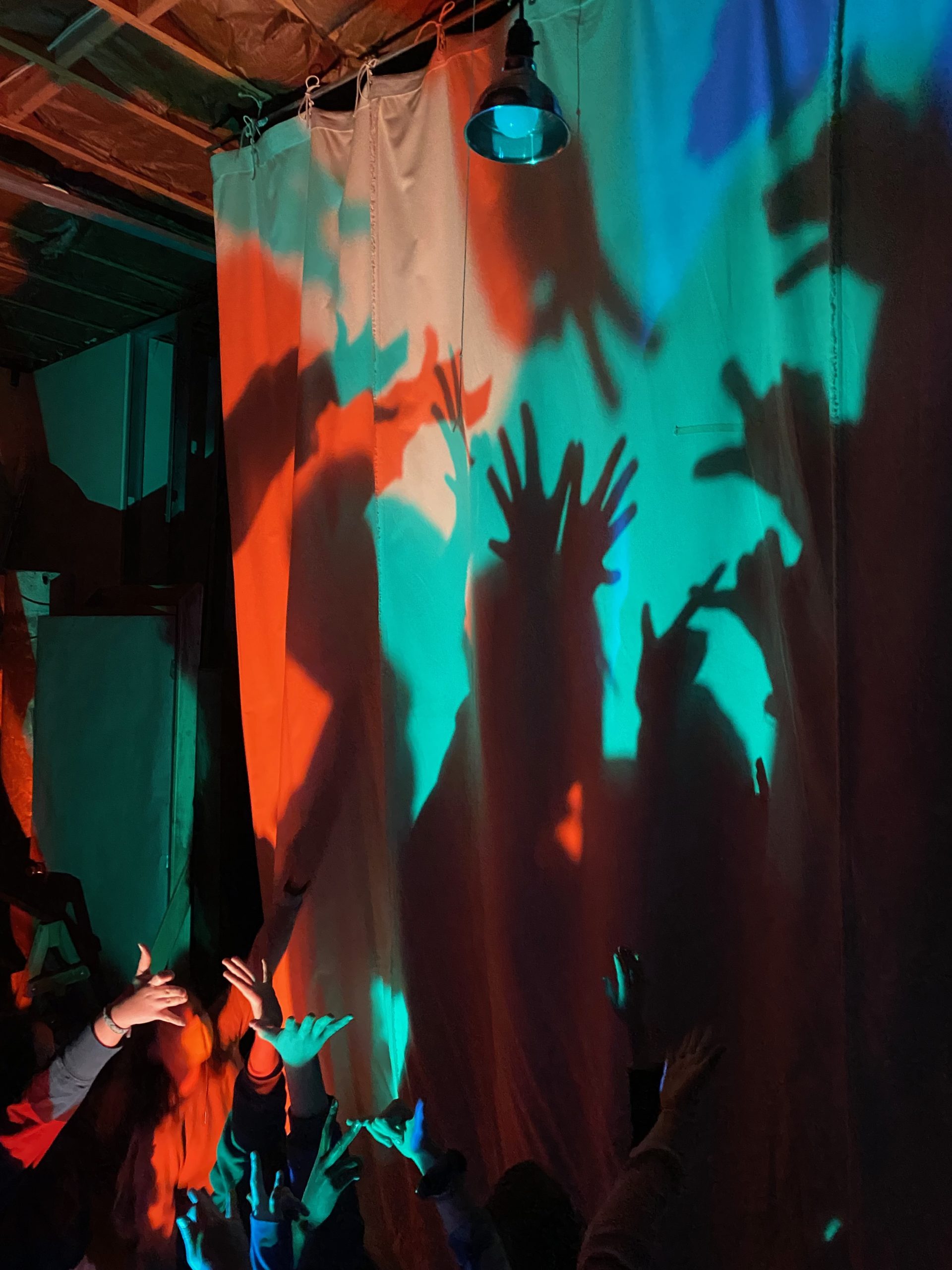

The study of heat was next and we focused on the warmth of colors, of sounds and of materials. We also explored how heat originates through combustion, light, friction, internal stress and electricity. Concluding our time with how heat travels through conduction, convection and radiation.
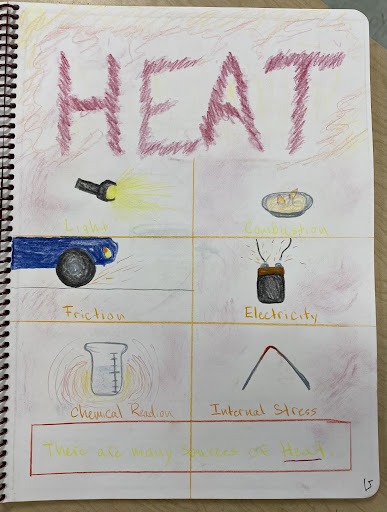

Up next was the story of the discovery of magnetism, which took us back to Ancient Greece and a shepherd named, Magnus. Magnus tried to sturdy his walk by placing nails into his shoes and his staff and found himself a high rock from which he could watch his sheep. Little did he know that he was standing on a “magical” rock. He could hardly move when he tried. From our studies in Geology, the students knew that this rock was indeed magnetite and that Magnus had discovered magnetism.
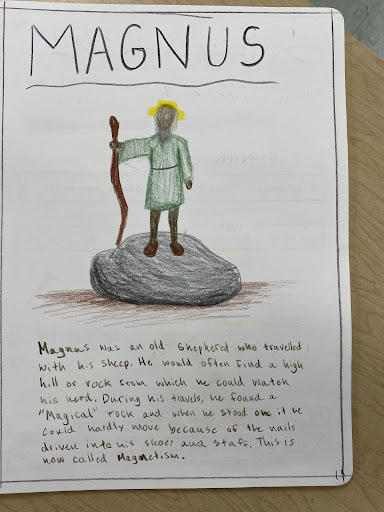

The students explored magnetism through various stations where they could discover the attractive power of magnets, how magnetic poles attract each other, that magnetism can travel through many materials and how a field of force penetrates and surrounds a magnet.
We concluded our introduction to 6th grade Physics with the study of static electricity. Here again we started with a story, that of a Greek scientist named Thales. He noticed that when amber was rubbed with a wool cloth, light objects were attracted to it. Electricity is named for the Greek word for amber, which is electron. The students enjoyed exploring how static electricity is produced by rubbing certain substances with other substances, that a static electric charge has the power to attract or repulse, similar to magnets and that static electricity can be detected and stored.
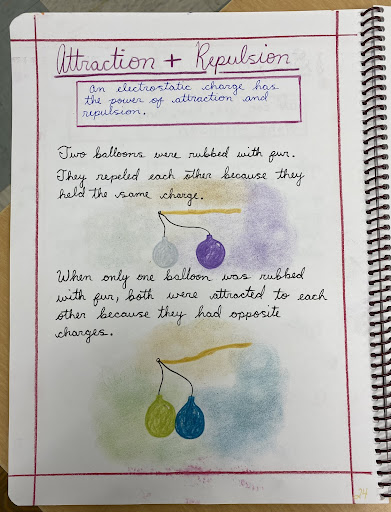

Our culminating demonstration was creating a Leyden Jar, where each of the 6th graders got to experience how a small charge would jump to the nail in the Leyden jar and then how a shock could be felt from the stored electricity!
Last but not least, we visited the Lancaster Science Factory to bring it all together.
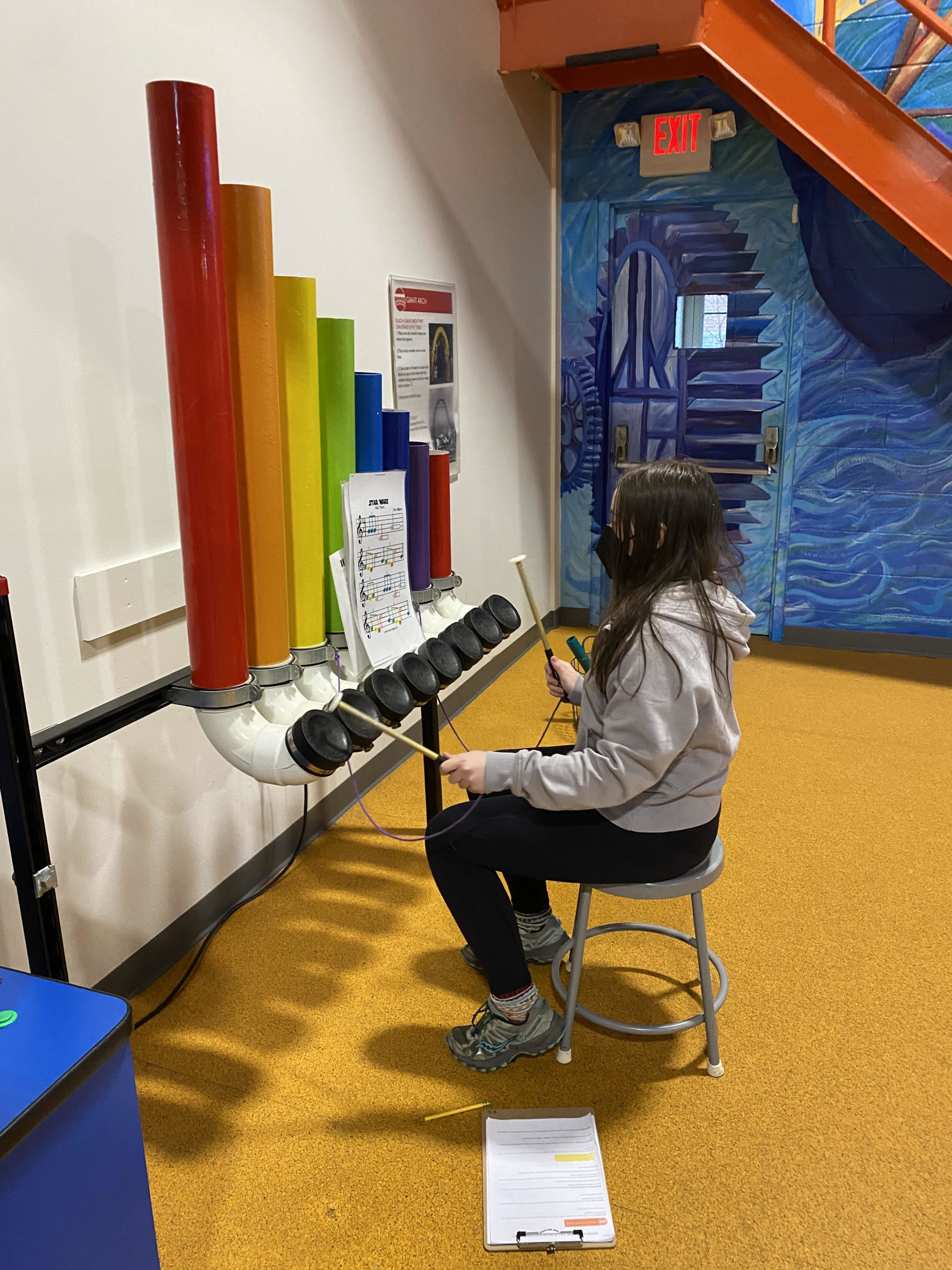

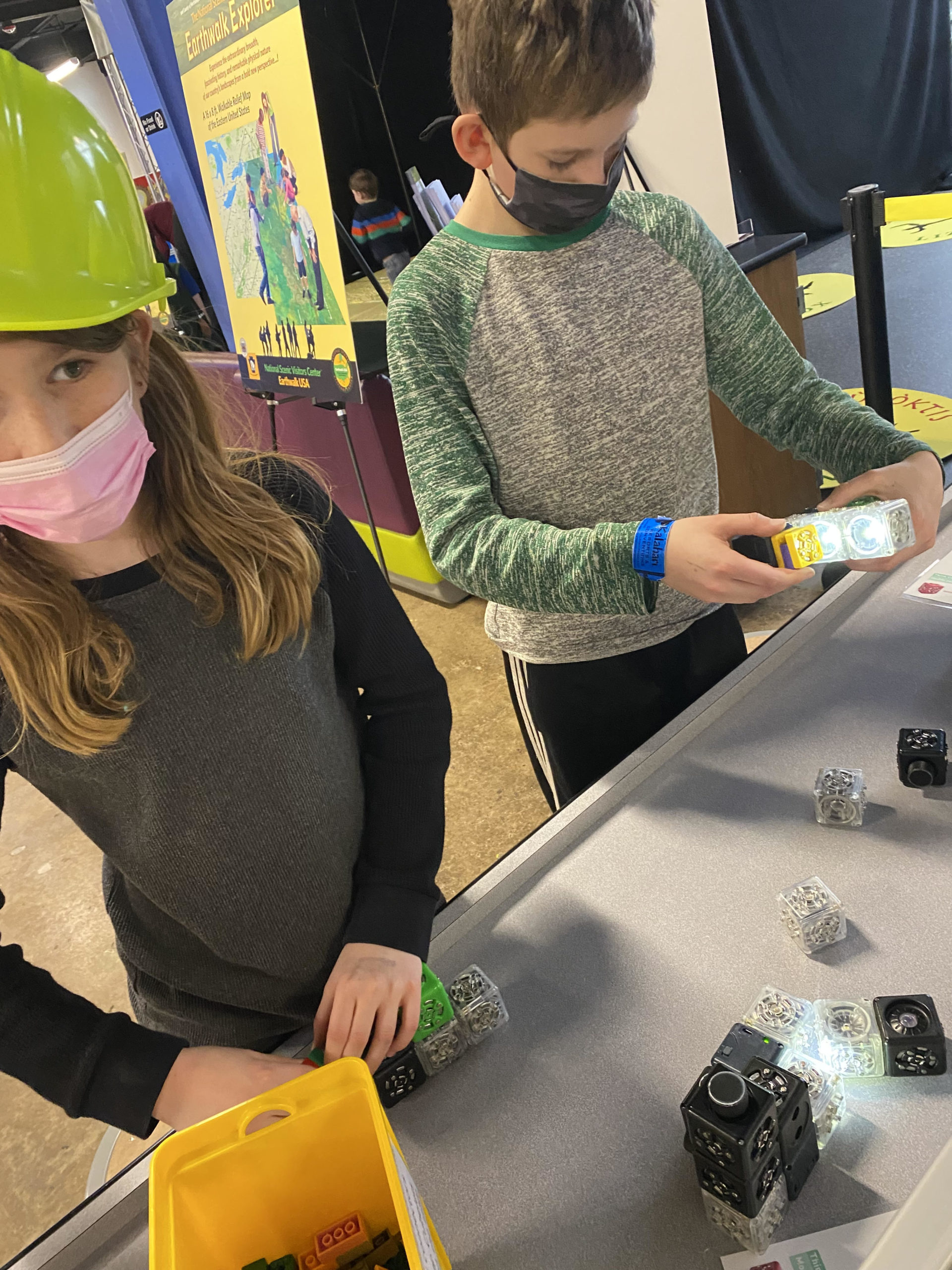

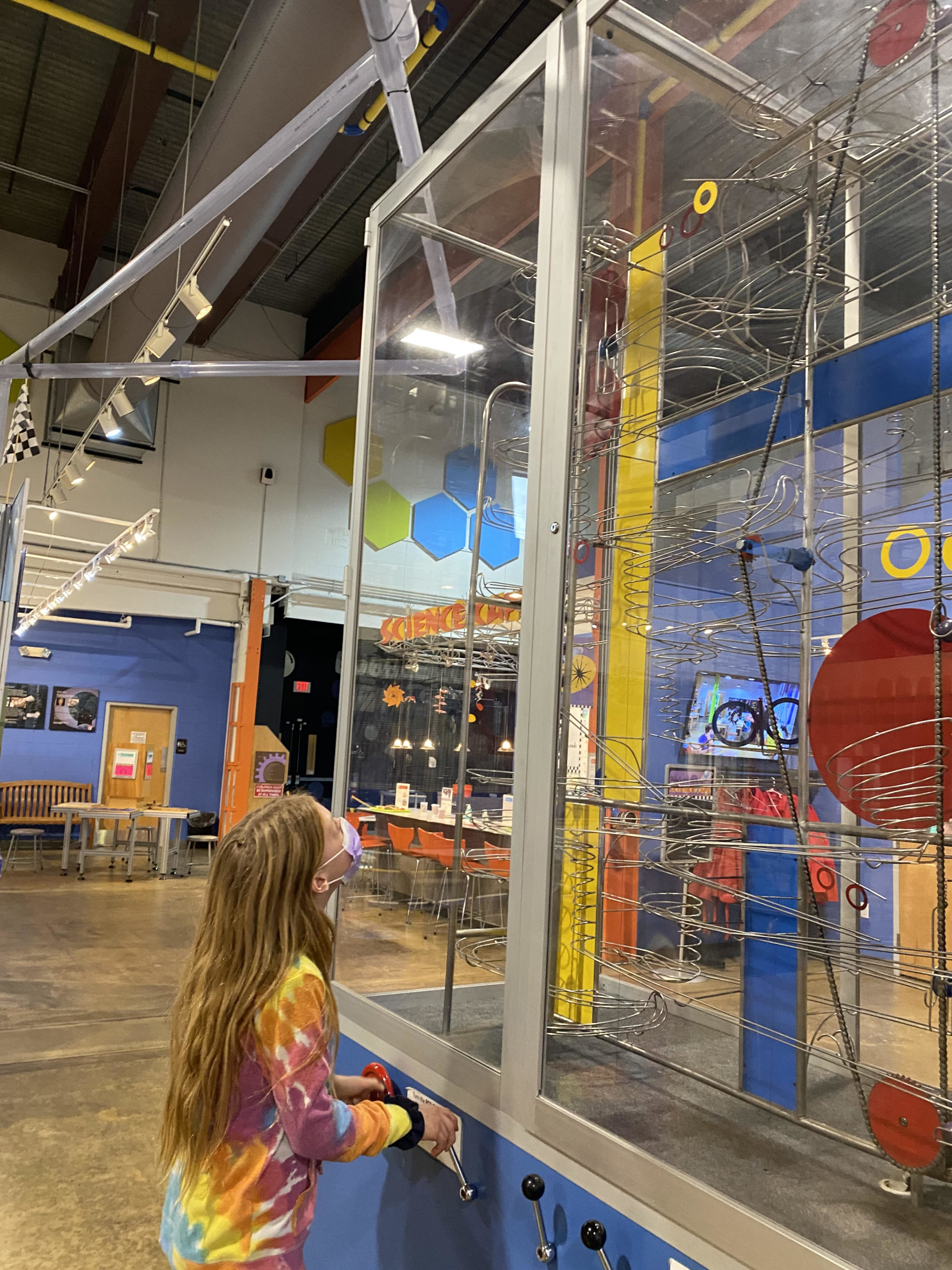

Trostli, R., & Trostli, R. (2016). Physics the Waldorf way, grades 6-8: A Manual for Teachers. Lystra Books & Literary Services.
Anna Perenna: A New Year’s Celebration in Ancient Rome
Written by Latin teacher, Magistra Sweeney
At SWS our Classical Latin classes learn grammar, vocabulary and pronunciation, but also live the language through the celebration of some aspects of the ancient Roman festivals. Roman history and culture come to life during recognition of Fontanalia in October, Saturnalia in December, and, most recently, Anna Perenna, the early Roman New Year’s celebration, in March.
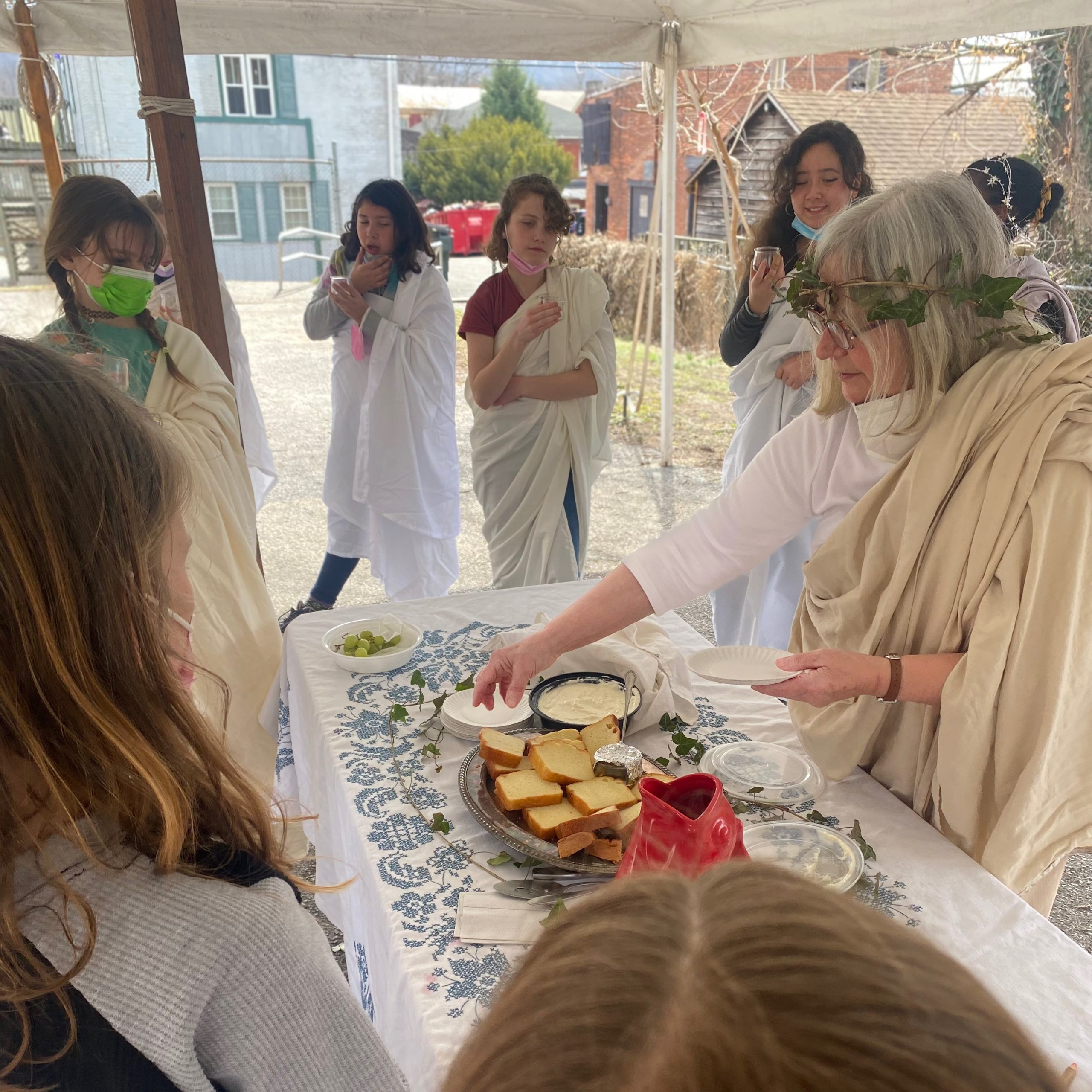

The origin stories of Anna Perenna are many, but we follow this version. In 494 BCE, the plebeians, tired of paying taxes and being conscripted into the army with no say in the government, left Rome and secluded themselves on the Sacred Mountain. An elderly woman, Anna, kept them alive with cake for some time, until they were coaxed back to Rome with a promise of better representation. After Anna’s death, she was declared a goddess and called Anna Perenna which can be translated as “lasting throughout the year.” Her outdoor festival, which included tenting, feasting, games, dancing and singing, was held on the 15th of March when the moon was full and spring was just beginning. March was the first month of the year in the old Roman calendar, before the Julian calendar was established in 46 BCE. The god Mars represented the new year and Anna Perenna the past year.
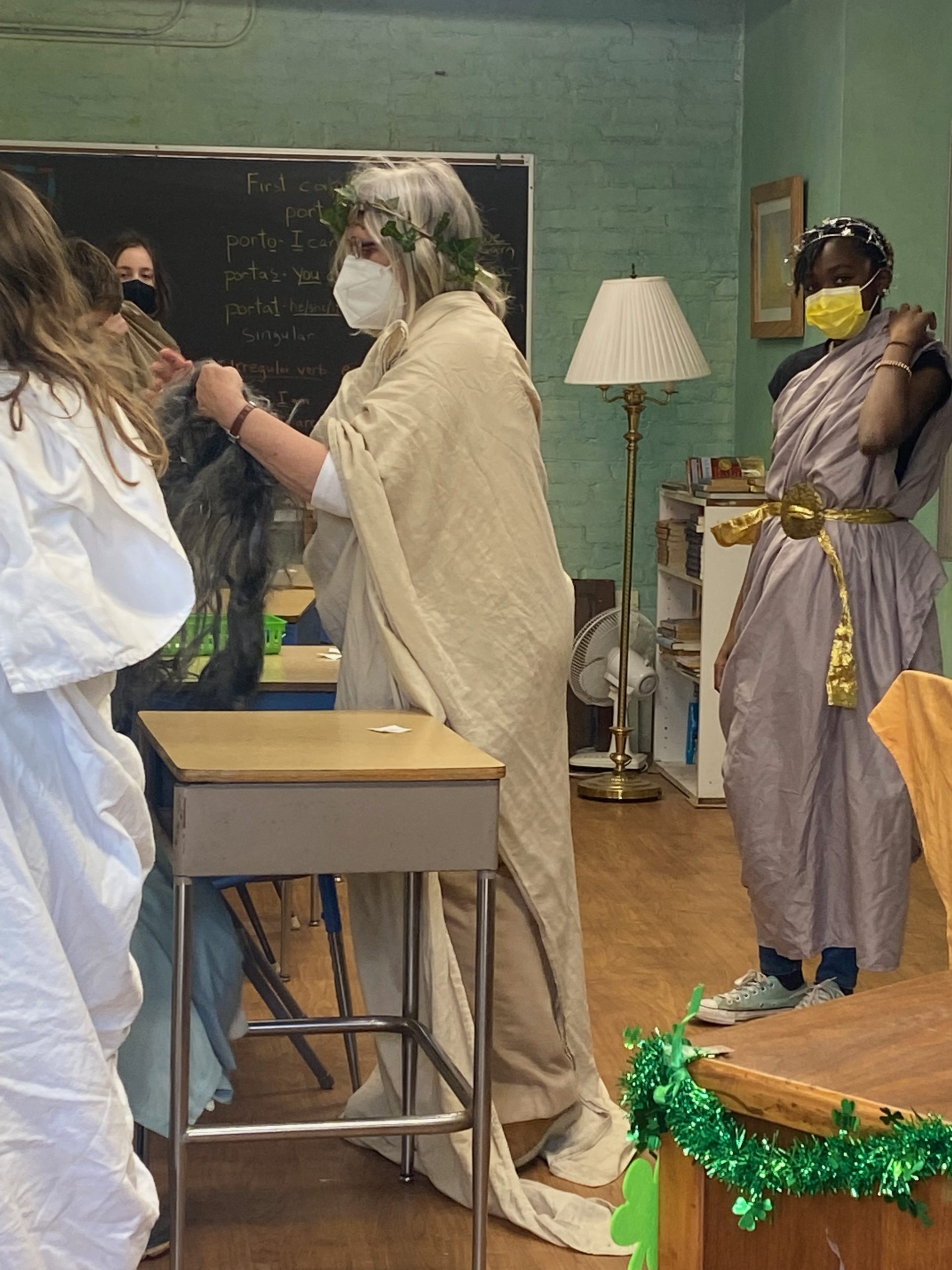

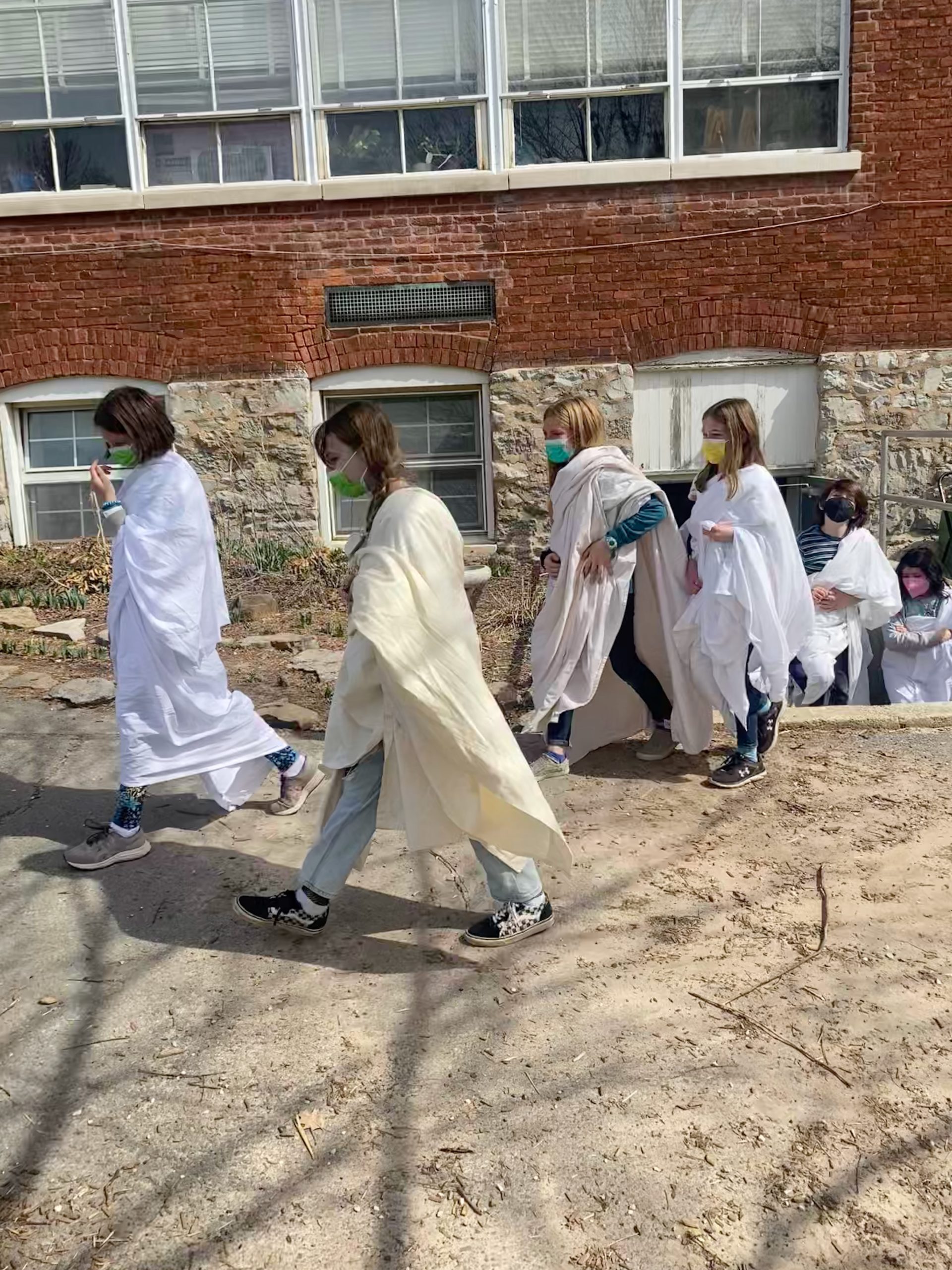

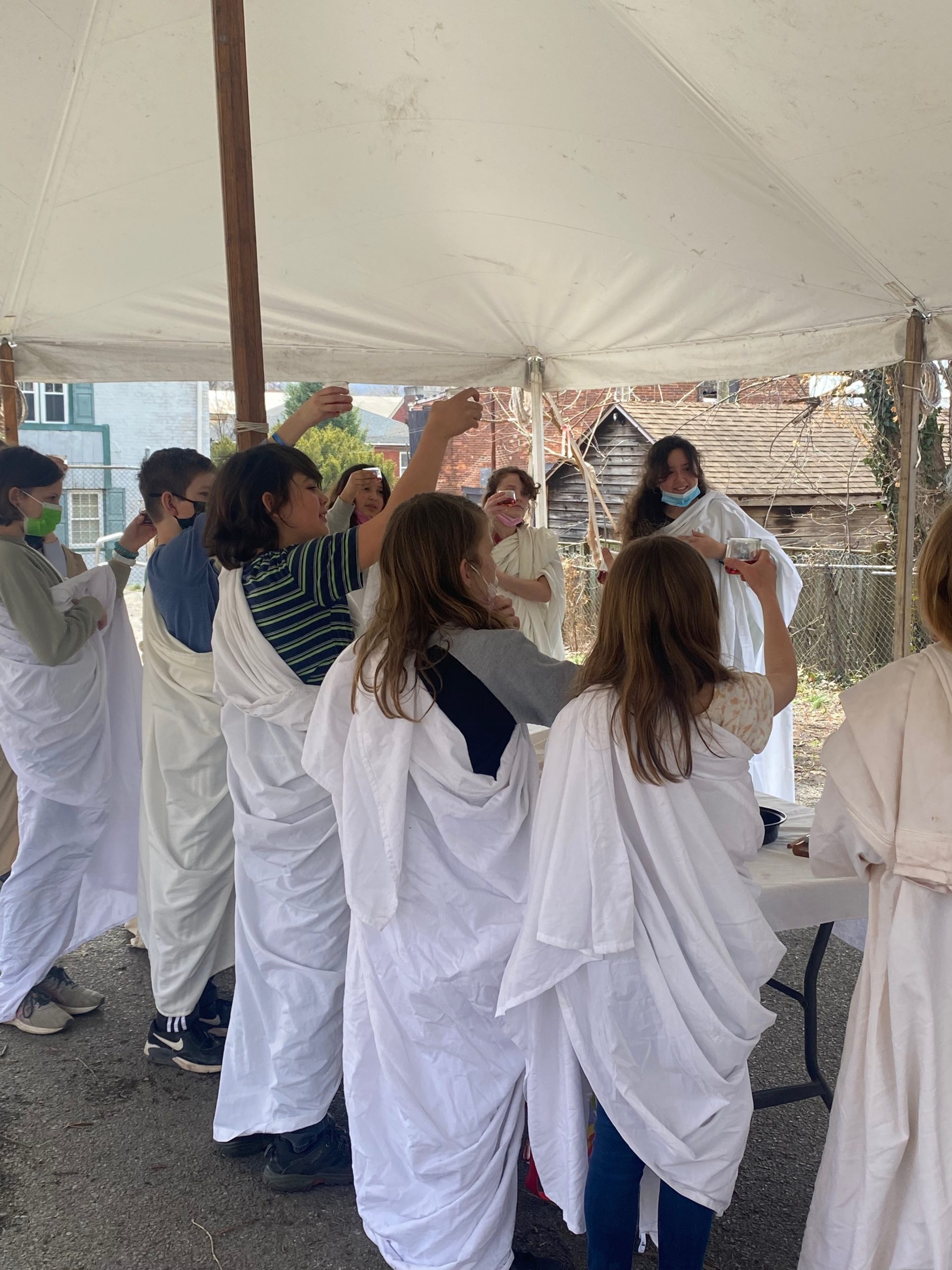

To celebrate Anna Perenna, our Latin classes are transported to ancient Rome.The students in grades 5-8 laugh as they struggle to wrap themselves in togas. The fates choose one class member to portray the old woman, Anna, and another to portray the god, Mars. In procession with chimes ringing, we walk with some pomp and circumstance to the outdoor tent where a table is laid with a great platter of cake slices, honeyed cheese and a fish-shaped pitcher of grape juice. We toast the old year, Anna Perenna, and then the new year, Mars, with “felicem novum annum” (Happy New Year), socialize and enjoy our cake together. Then it is time for games. This year we played “abde et pete” (hide and seek) where the seeker counted from “unus to viginti” (1-20) and shouted “paratus aut non, hic venio!”(Ready or not, here I come!). Festivals create joyful memories and enliven the students' perception of the ancient people who spoke the language they are striving to learn and translate.
A Gratitude Note from Dr. Tom
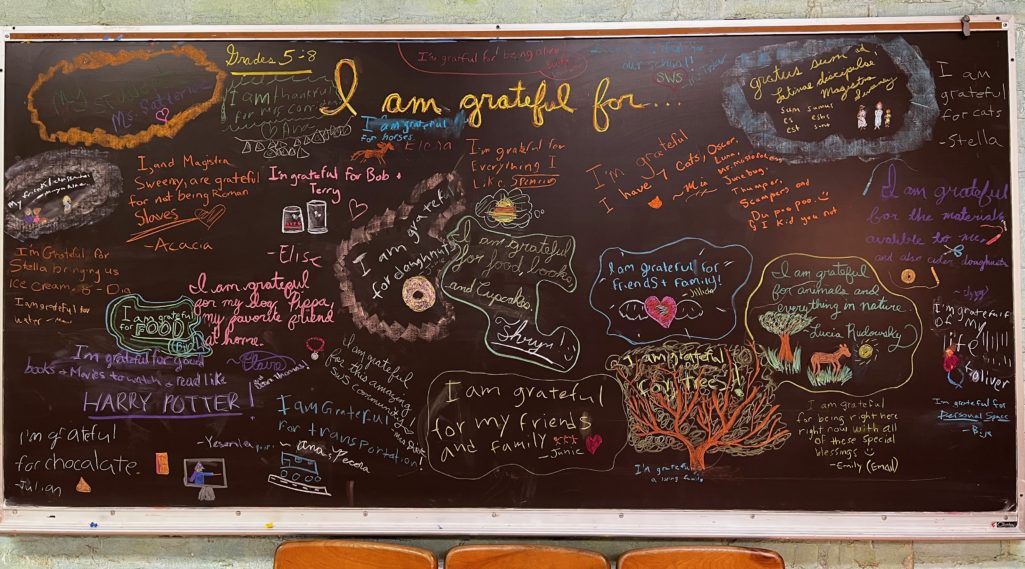

As we enter this season of gratitude, I'm reminded of a poem written by a Waldorf teacher that begins with the two lines...
Home is where the heart is
So let this heart beat strong.
For the children in our care, home and school is the heart of their world. The support of our parents and the hard work of our teachers create a nurturing culture that we are grateful for at this time of Thanksgiving.
For our students, the heartbeat of the day starts with a greeting from a teacher, a rhythmical verse with classmates, and a measured song of reflective meaning. The challenge of the main lesson transcends memorization and recall to focus on the essence of learning: reflection, debate, understanding, and application. When I observe our dedicated teachers at work, I am thankful for their energy and talent to create authentic learning materials that challenge critical thinking and nurture self-discovery.
Susquehanna Waldorf's teachers are aware of society's influences on young people that can lead them to feel entitled to many things we can take for granted. Each teacher accepts the challenge by modeling reflective behavior and designing lessons that build awareness for all we have. How exciting to think about the impact of our grateful and resilient students will have on our future world! To borrow from the principles of Waldorf schools...
As an individual in society, our students are empowered to serve humanity with the strength of will, depth of feeling, clarity of thought, and the ability to work with others.
Thank you again for all your support of SWS. Have a warm and reflecting Thanksgiving!
Tom
Mandarin Lessons with Tseng Lao Shi


Learning world languages is a vital piece of Waldorf education. Waldorf students begin learning two languages in 1st grade. Here at Susquehanna Waldorf School, one of the languages our 1st through 8th grade students are learning is Mandarin.
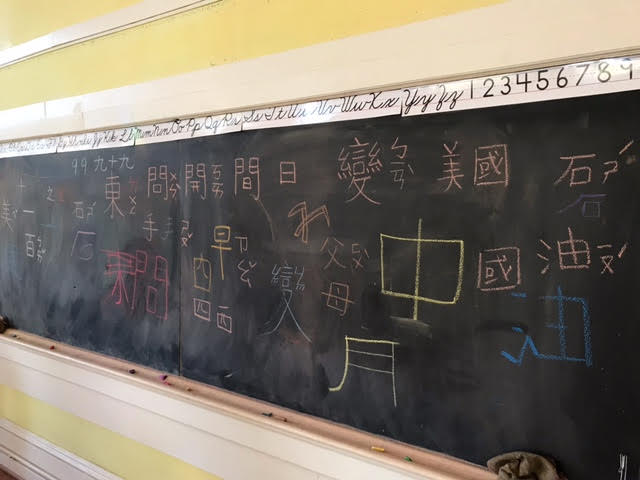

Our students begin learning Mandarin in 1st and 2nd grades through oral storytelling, song, and movement. By the 3rd grade, they begin learning to write Mandarin.
Our class 3 students have loved to write Chinese characters on the chalkboard since they were in the 2nd grade. They often bring characters they find on soy sauce bottles or a Chinese book. "I'm impressed by their ability to write the characters without being taught how to write them first," says Hui-Ling Singer, our Mandarin teacher.
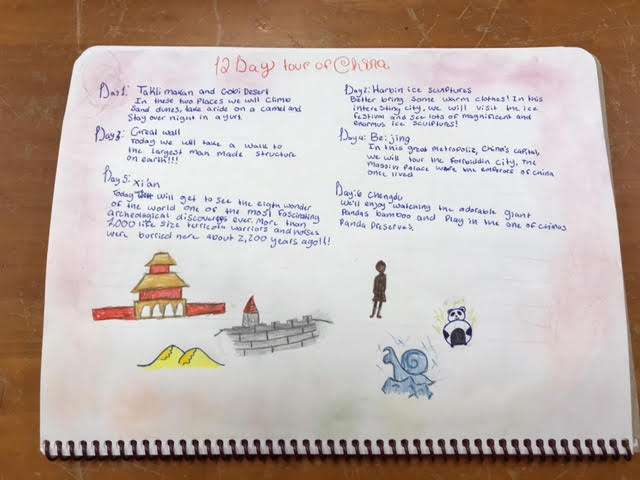

Our class 6 students just finished a 12 day imaginary trip to China. On Day 6, the students visited the panda reserve in Chengdu. The students learned Chinese paper cutting and how to make a panda.
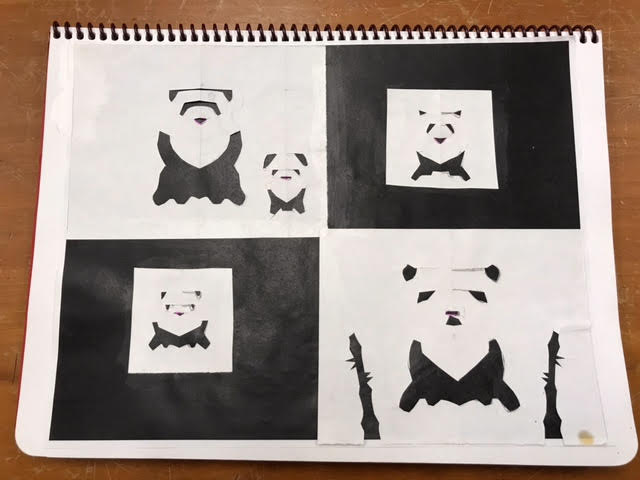

In Waldorf education, we don't just teach a language, we teach culture; which helps our students develop empathy and understanding of different ways of being around the world.
Día de los Muertos, Grades One through Four
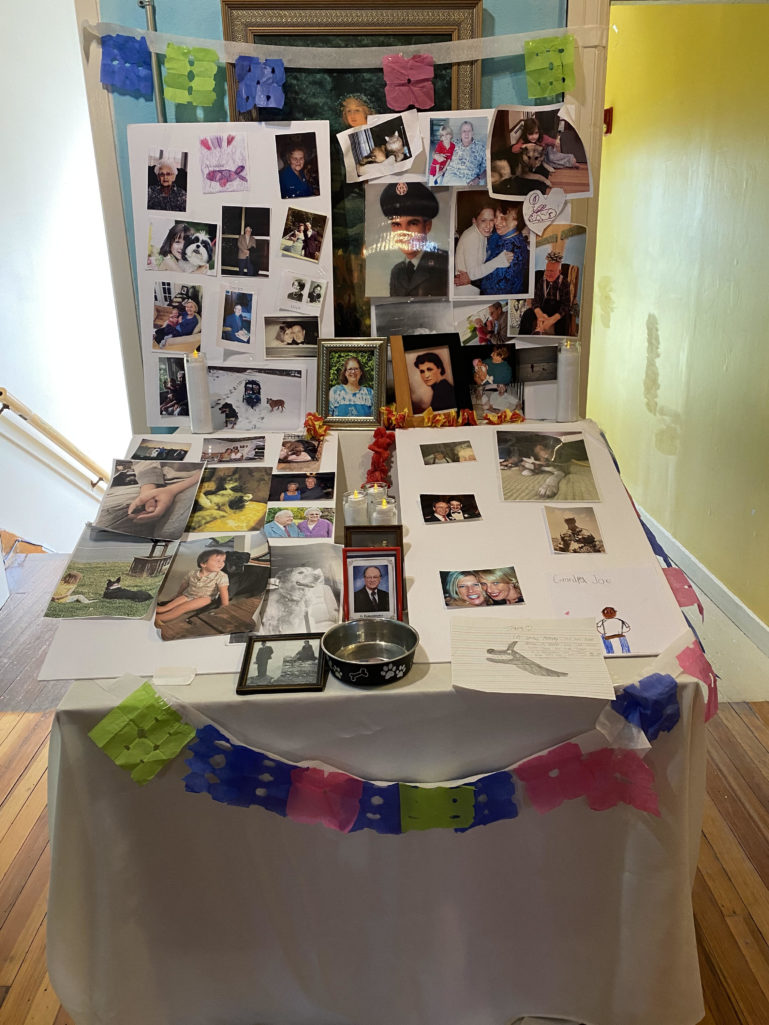

In Spanish class, our students are not only learning a new language, they are learning a new culture! "When students learn a new language, they have to feel it. It is not just about experiencing how people speak their language, but also the way they think and live," says SWS Spanish teacher Fernanda Brito-Munoz.
Grades one through four celebrated Ancestors Day, or Día de los Muertos, on November 3rd. They remembered the lives of loved ones who have departed and shared stories about them (including pets!). After decorating the table with paper flowers, paper flags and pictures of their ancestors, the students discussed their thoughts about family and how important it is to honor life.
It is our hope that this celebration will grow over time and, in the future, will include baking a special bread, decorating chocolate, and the retelling of many, many more family stories.
7th Grade Renaissance History
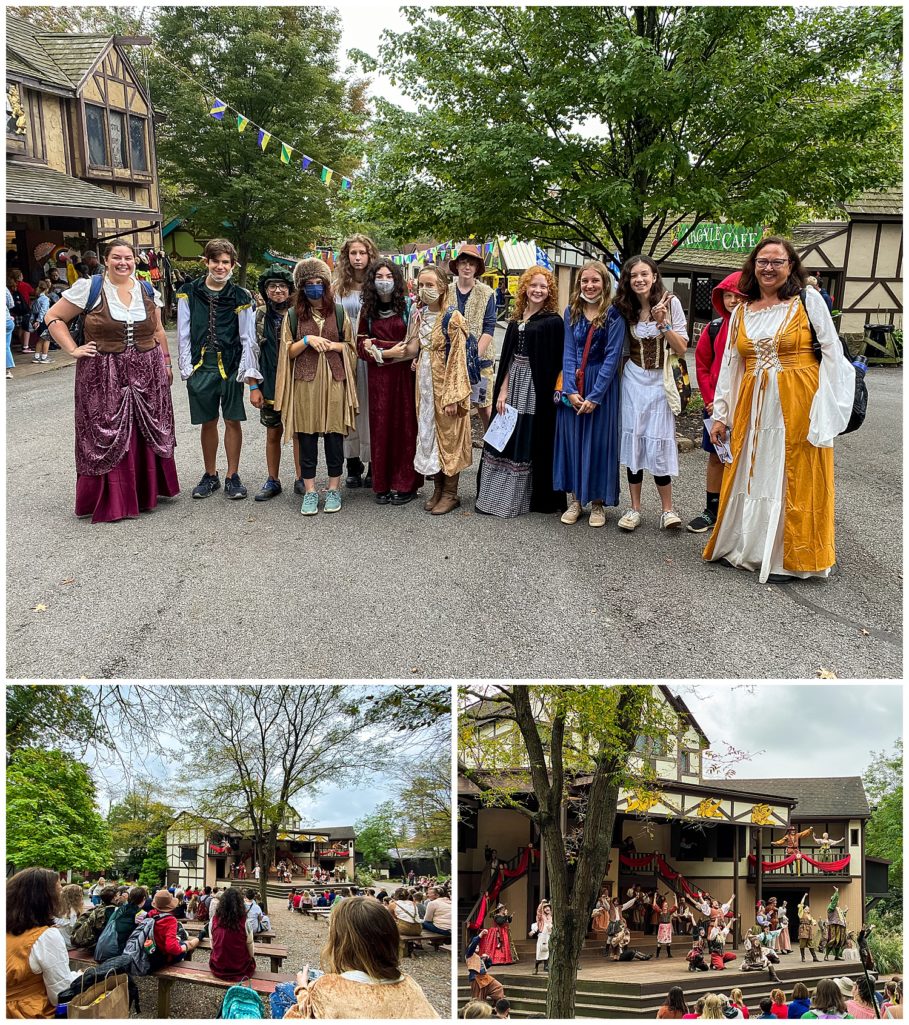

The 7th grade just finished diving into the history of the Renaissance and what beautiful work they did! In Waldorf education, our teachers employ a multi-faceted approach to learning. Ms. Tucker taught the history of the Renaissance through writing, artistic expression, math, reading and even a trip to the Renaissance Faire.
The 7th grade began with the review of life in the Middle Ages, discussing what changed during the Renaissance and why. Next, they learned the biographies and stories of many Renaissance personalities such as Joan of Arc, Elizabeth I & Henry VIII of England, Isabella and Ferdinand of Spain, Lorenzo de' Medici of Florence, Martin Luther, and Johannes Gutenberg. The history came alive with their field trip to the Renaissance Faire, which was presided over by none other than Queen Elizabeth herself!
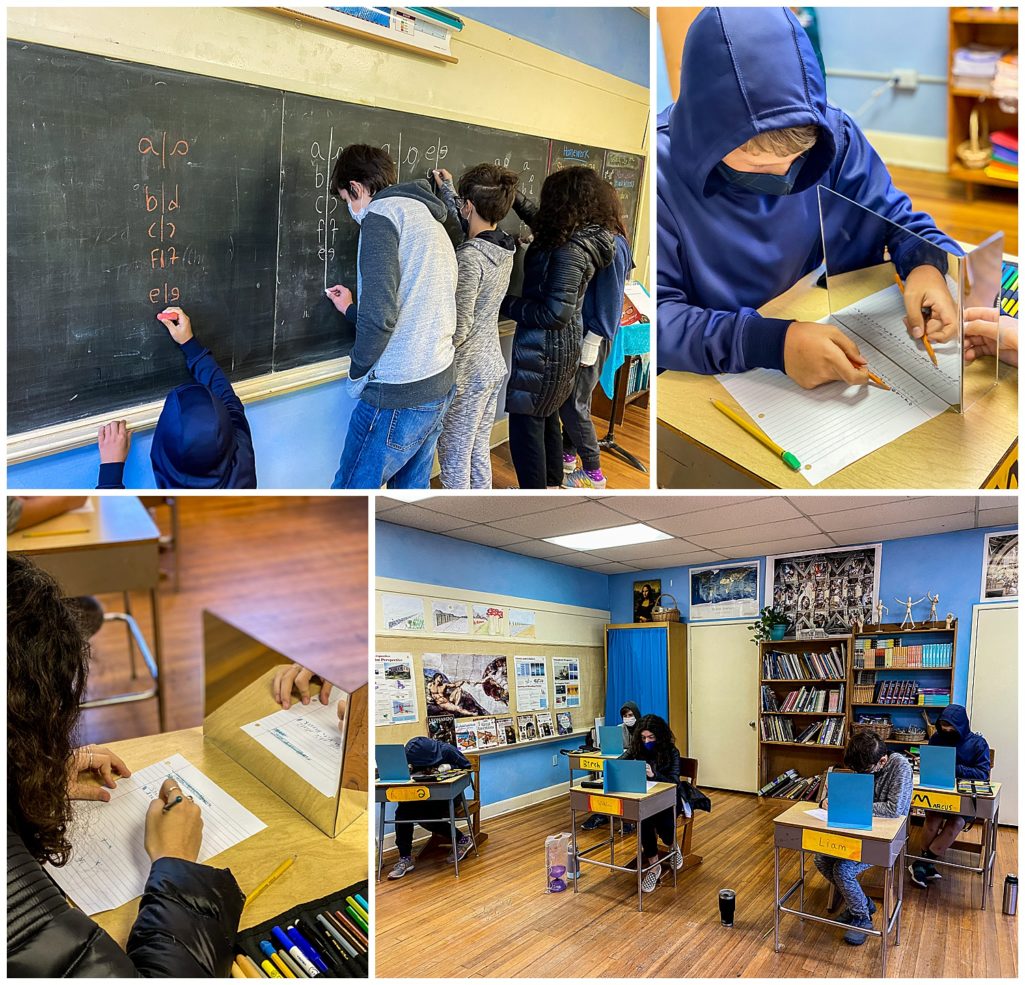

The students wrote love letters to Queen Elizabeth. They put Queen Isabella of Spain on “trial” and wrote about her reign from different perspectives. They read several non-fiction articles about the Renaissance and ended the week reading the short story "The Black Cat" by Edgar Allen Poe aloud while sipping hot chocolate. They also learned the “Song of the Witches” verse from Shakespeare’s Macbeth during morning speech work, which they performed for the community at our Harvest Assembly.
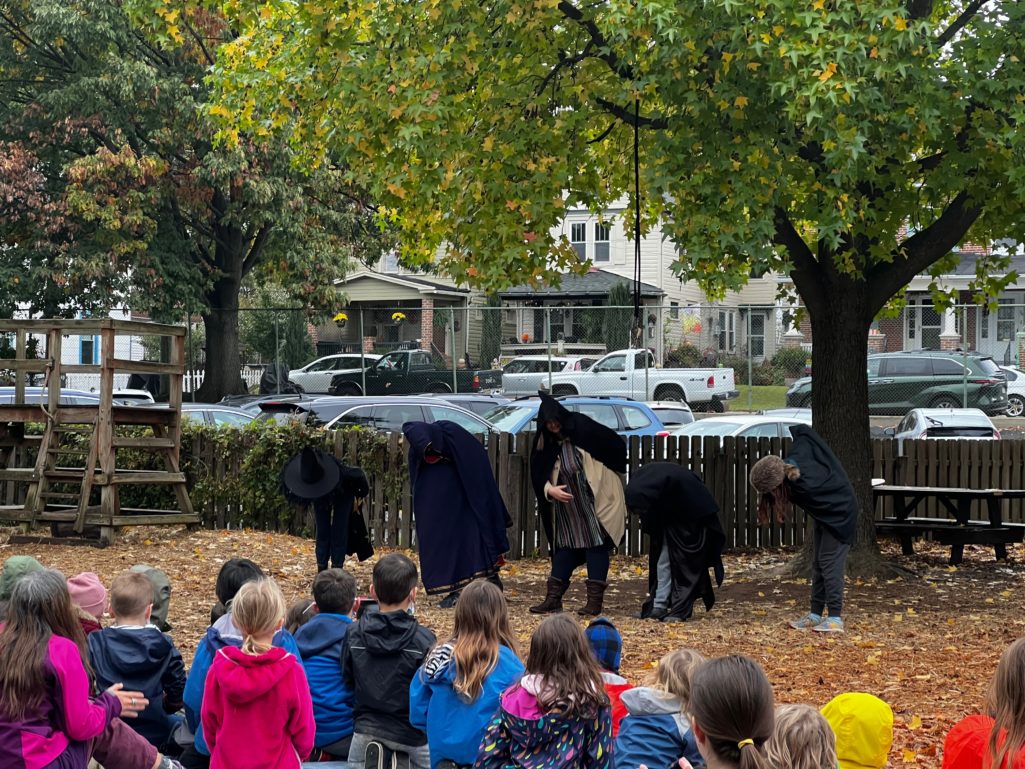

The 7th grade ended their study of the Renaissance with an entire week dedicated to Renaissance art. They viewed and heard stories about the creation of some of the great works of 4 Renaissance masters: Botticelli, Leonardo, Michelangelo and Raphael. The students studied the proportions of human faces while drawing a portrait of Queen Elizabeth and they practiced mirrored writing in the style of Leonardo Da Vinci, who notoriously wrote from right to left with mirrored letters in his notebooks. They experimented with sketching hands and painted the "Hands of Adam" detail from the ceiling of the Sistine Chapel with their paper pinned above their heads to better understand how it would have felt for Michelangelo.
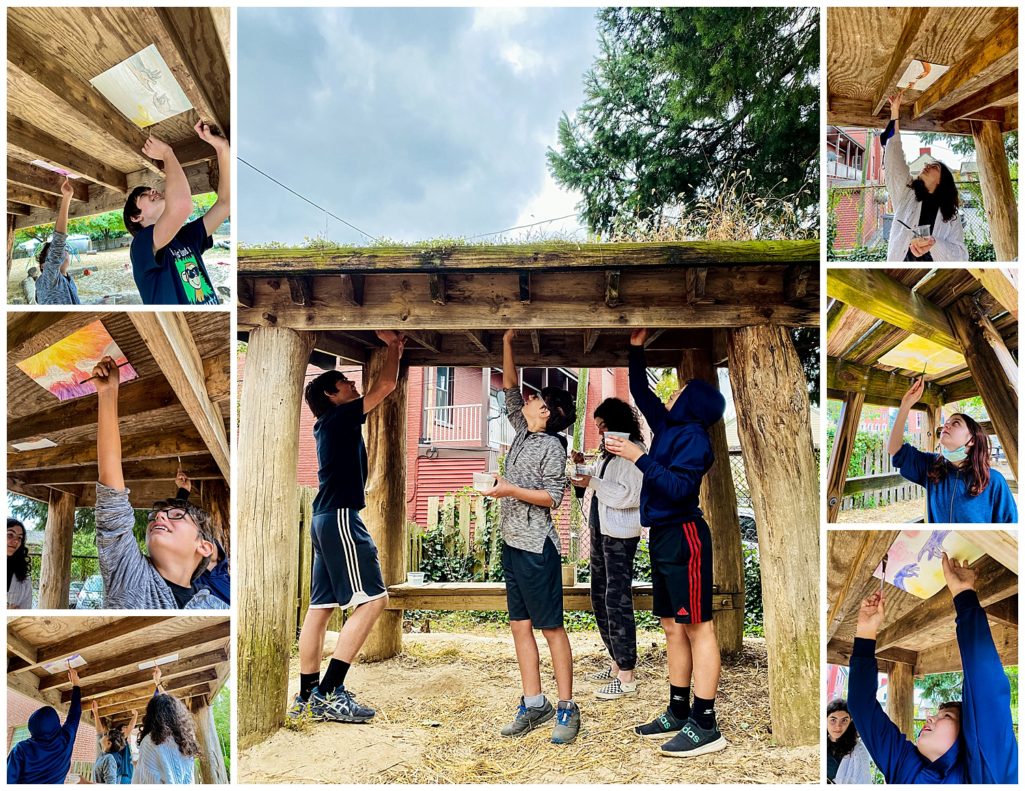

The 7th grade ended this learning block with a research project and presentation featuring 6 "outrageous" women who lived during the Renaissance. Their next main lesson block is Physics, where they will continue their study of acoustics, optics, electricity and magnetism, and introduce a new topic: simple machines.
6th Grade Geology
In Waldorf education, we use a very experiential approach to Science. A hands-on, multi-faceted approach allows all students to meaningfully engage and connect with their learning: Artistic elements, creative writing, and field trips are combined with visual, audible, and tactile lessons to bring science to life.
This month, our 6th Grade dove into Geology and Mineralogy, and what an experience they had!
The classroom is full of volcano paintings, felted layers of the earth, fossils, crystals and rocks, and hand-made cave drawings. Imagine the students’ enthusiasm as they partook in the following work: As they learned about the interior of our earth, they wet felted layered models of the Earth. As they learned about Plate Tectonics, they used graham crackers and cool whip to model the different plate boundaries, and what changes in the Earth's crust they create. (Fun, messy, AND delicious!) As they studied the characteristics of volcanoes, they free-painted their own volcanoes during an Artistic period.
The class then explored the world of rocks and minerals. They started off by bridging their Roman History block (from earlier in the school year) with their study of volcanoes by learning about Mt. Vesuvius, the volatile composite volcano in Italy, and its infamous eruption during Roman times that destroyed, covered, and preserved the city of Pompeii in 79 CE.
They then learned about what rocks and minerals are, where they’re found, and all the different ways we use them. Thanks to the school collection and the generously donated samples from the geology lab at HACC, (from a class parent), they had a stellar display of all different types of rocks, minerals, and fossils to explore.
Next, they studied the rock cycle and how different types of rock are created, destroyed, and recycled into new types of rock. To demonstrate this cycle, they used Starburst candies cut into small pieces and squished them together to create sedimentary rocks, added a little heat AND pressure to mold them into metamorphic rocks, and melted and cooled them to make igneous rocks.
They wrapped up the block by learning about the properties of minerals and how to identify them, discussed mineral crystals, and made some beautiful drawings of mineral crystal clusters on black cardstock using chalk pastels.
To round out the classroom experiences, class teacher Summer Tucker scheduled a field trip, a guest speaker, and tied in Language Arts as well as a creative artistic project- bringing all of their new learning to live.
After hearing about limestone caves and how they are formed, they visited Indian Echo Caverns, a local limestone cave system. Over the course of the day, they attended 3 private, hands-on workshops, (Rockin’ Rocks, Fossils Forever, Mineral Madness), and had a 1-hour private cavern tour.
A class parent presented beautiful mineral crystal samples and shared many interesting stories of how she unearthed these crystals from different areas all around the country. She also generously gifted each student with a canvas and small bag of crystals, which they used to make their own beautiful crystal grid artwork.
Students created a diary entry from the first-person perspective of someone living through the eruption of Mt. Vesuvius, as part of their language arts and creative writing work.
Finally, during the scheduled artistic time, they learned about Lascaux Cave in France, an ancient limestone cave covered with prehistoric cave paintings, which was accidentally discovered by 4 teenage boys in the 1940s. After hearing the story, and taking a virtual tour through a replica of the cave, they created their own version of the cave paintings by working together to make a 12ft cave art mural (going as far as hanging it behind the stage and painting by candlelight).
Well done 6th grade. What a fun, informative, and creative Geology Block you’ve had!
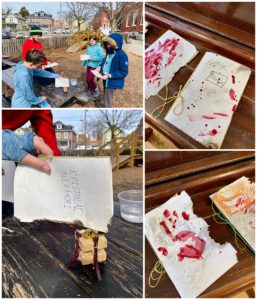

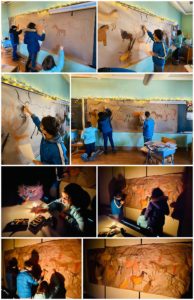

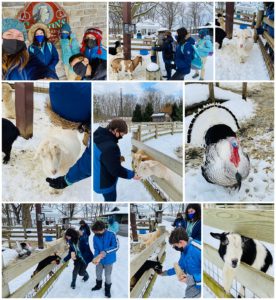

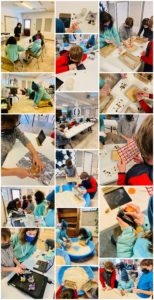

SWS Alumni Spotlight: Dakota Lehman
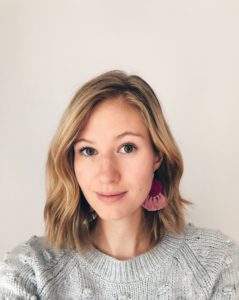

Last week I had the chance to speak with SWS Class of 2009 Alumni Dakota Lehman. Dakota just completed her Master’s Degree in Art Therapy at Concordia University in Montreal, Canada. I don’t think I could have found a better person to kick off our SWS Alumni Spotlight Series given the many emotional and psychological challenges our community --and the whole world-- now faces because of the coronavirus. Her optimism and tenacity shines through the uncertainty; and I was present to the spirit of Waldorf in her words.
Her Story Begins At Susquehanna Waldorf School
Upon graduation from Susquehanna Waldorf School, Dakota and her family moved to Asheville, N.C.; she transitioned from a class of eight students at SWS to a massive high school comprising eight buildings! She welcomed the change. Near the end of her high school career, she enrolled in a psychology class which peaked her interest in the mental health field and by the time she entered college, her vision had become clear. Integrating her two passions, she went on to complete her Undergraduate studies at the University of North Carolina-Wilmington with a B.A. Psychology and minor in Visual Arts. No stranger to making moves, Dakota decided to head to Canada for her Master’s program; she is now in the process of completing her licensure and in the meantime, is ready for her next Big Adventure.
Here’s Our Conversation
Diane: What’s special to you about Waldorf?
Dakota: The community aspect, support from my class, the arts, and the rituals...from the festivals with the bigger community to taking moments to come together in a circle during school. Getting moments to take a second to just breathe and be with yourself. I am not naturally a “take a moment person,” I am a stress and anxiety person! So I remember holding those moments of stillness and togetherness and positivity.
As an adult I’ve been able to make really good connections with people my age. Waldorf taught me the importance of social-emotional learning, like learning to navigate hard times or friendship issues. We learned to navigate that at an early age, we had the support of teachers and parents which allowed me to learn how to make better connections as an adult.
Diane: How has the Waldorf Methodology inspired you in your work or in your life?
Dakota: My Waldorf education gave me a way to process information in the world and in myself through so many different approaches to learning. Sometimes I will sit and knit or crochet as a way to process my day or something that I am going through. That’s something that I had the privilege of learning early in life and I’ve learned to use that skill as an adult.
Making art in my early years helped me to understand in high school and college that others may learn in different ways. I was given the tools to be able to adjust and adapt to learning in different environments and I wanted to be able to give the experience of using art mediums in different ways to others. I now work with children, and especially with the influence of technology, it’s important to have other options as new ways to process and explore life.
Diane: What are you up to in your career?
Dakota: I want to work as an Art Therapist but I have to get my license, so it may take a while to find the job that I really love in Art Therapy. So I am applying for art teacher and school counselor positions right now. I love working with children so going back into a school environment would be wonderful.
I would love to work in a Waldorf environment because of how like minded that community can be. However, I worked with the equivalent of child protective services in Canada and learned the value of providing those services and resources to young people who wouldn't normally have access to them. Being able to give and share is so rewarding; to work with kids who haven't even had access to art materials before is special. You meet these kids and see their resilience.
So I am open to the possibilities.
Diane: Did your experience at SWS and the Waldorf ethos of service help to inspire you to seek your career path in some way? Or would you say that service is just a part of your personality?
Dakota: I don’t see myself as a service-giving person, but I really like connecting with people. I have definitely always been like that. I see myself as someone who wants to give space to others and I got that from Waldorf in different ways... going back to circle, the festivals and rituals, but I also think it’s just who I am.
Diane: Do you remain connected with the SWS community?
Dakota: Yes! I am still close with my SWS cohort and teacher who I get to visit occasionally. And I had a video call with everyone from my class just the other day.
Thanks, Dakota, for sharing stories about your path with the Susquehanna Waldorf School Community! We wish you joy and peace as you continue your journey.
With Warmth and Support,
Diane Richards, Development and Alumni Coordinator
Diane Richards is a former K-12 Visual Arts Teacher, a Trauma-Aware Yoga and Mindfulness teacher and is a graduate student studying psychotherapy at Widener University

